HMS Beagle: Darwin’s Trip around the World
Charles Darwin sailed around the world from 1831–1836 as a naturalist aboard the HMS Beagle . His experiences and observations helped him develop the theory of evolution through natural selection.
Biology, Geography, Earth Science, Geology, Ecology

Loading ...
Idea for Use in the Classroom
Charles Darwin set sail on the ship HMS Beagle on December 27, 1831, from Plymouth, England. Darwin was 22 years old when he was hired to be the ship’s naturalist . Most of the trip was spent sailing around South America. There Darwin spent considerable time ashore collecting plants and animals. Darwin filled notebooks with his observations of plants, animals, and geology . The trip was an almost five-year adventure and the ship returned to Falmouth, England, on October 2, 1836.
Throughout South America, Darwin collected a variety of bird specimens . One key observation Darwin made occurred while he was studying the specimens from the Galapagos Islands. He noticed the finches on the island were similar to the finches from the mainland, but each showed certain characteristics that helped them to gather food more easily in their specific habitat. He collected many specimens of the finches on the Galapagos Islands. These specimens and his notebooks provided Darwin with a record of his observations as he developed the theory of evolution through natural selection .
Have students work in pairs to use the map and the resources in the explore more tab to create a social media feed that includes five dates and posts from the expedition. Students may need to conduct additional research to ensure their proposed posts are factual and something Darwin would have seen on the trip. Help students brainstorm ideas for their posts by asking: What types of animals would Darwin have seen? Are any of them extinct today? What types of plants did he note? What types of geology did he see? What would you imagine some of the hardships the explorers would have encountered on this voyage?
Articles & Profiles
Media credits.
The audio, illustrations, photos, and videos are credited beneath the media asset, except for promotional images, which generally link to another page that contains the media credit. The Rights Holder for media is the person or group credited.
Production Managers
Program specialists, last updated.
October 19, 2023
User Permissions
For information on user permissions, please read our Terms of Service. If you have questions about how to cite anything on our website in your project or classroom presentation, please contact your teacher. They will best know the preferred format. When you reach out to them, you will need the page title, URL, and the date you accessed the resource.
If a media asset is downloadable, a download button appears in the corner of the media viewer. If no button appears, you cannot download or save the media.
Text on this page is printable and can be used according to our Terms of Service .
Interactives
Any interactives on this page can only be played while you are visiting our website. You cannot download interactives.
Related Resources
Charles Darwin and His Voyage Aboard H.M.S. Beagle
The Young Naturalist Spent Five Years on a Royal Navy Research Ship
Bettmann/Contributor/Getty Images
- Important Historical Figures
- U.S. Presidents
- Native American History
- American Revolution
- America Moves Westward
- The Gilded Age
- Crimes & Disasters
- The Most Important Inventions of the Industrial Revolution
- African American History
- African History
- Ancient History and Culture
- Asian History
- European History
- Latin American History
- Medieval & Renaissance History
- Military History
- The 20th Century
- Women's History
The History of H.M.S. Beagle
Gentleman passenger, darwin invited to join the voyage in 1831, departs england on december 27, 1831, south america from february 1832, the galapagos islands, september 1835, circumnavigating the globe, back home october 2, 1836, organizing specimens and writing, the theory of evolution.
:max_bytes(150000):strip_icc():format(webp)/McNamara-headshot-history1800s-5b7422c046e0fb00504dcf97.jpg)
Charles Darwin’s five-year voyage in the early 1830s on H.M.S. Beagle has become legendary, as insights gained by the bright young scientist on his trip to exotic places greatly influenced his masterwork, the book " On the Origin of Species ."
Darwin didn’t actually formulate his theory of evolution while sailing around the world aboard the Royal Navy ship. But the exotic plants and animals he encountered challenged his thinking and led him to consider scientific evidence in new ways.
After returning to England from his five years at sea, Darwin began writing a multi-volume book on what he had seen. His writings on the Beagle voyage concluded in 1843, a full decade and a half before the publication of "On the Origin of Species."
H.M.S. Beagle is remembered today because of its association with Charles Darwin , but it had sailed on a lengthy scientific mission several years before Darwin came into the picture. The Beagle, a warship carrying ten cannons, sailed in 1826 to explore the coastline of South America. The ship had an unfortunate episode when its captain sank into a depression, perhaps caused by the isolation of the voyage, and committed suicide.
Lieutenant Robert FitzRoy assumed command of the Beagle, continued the voyage and returned the ship safely to England in 1830. FitzRoy was promoted to Captain and named to command the ship on a second voyage, which was to circumnavigate the globe while conducting explorations along the South American coastline and across the South Pacific.
FitzRoy came up with the idea of bringing along someone with a scientific background who could explore and record observations. Part of FitzRoy’s plan was that an educated civilian, referred to as a “gentleman passenger,” would be good company aboard ship and would help him avoid the loneliness that seemed to have doomed his predecessor.
Inquiries were made among professors at British universities, and a former professor of Darwin’s proposed him for the position aboard the Beagle.
After taking his final exams at Cambridge in 1831, Darwin spent a few weeks on a geological expedition to Wales. He had intended to return to Cambridge that fall for theological training, but a letter from a professor, John Steven Henslow, inviting him to join the Beagle, changed everything.
Darwin was excited to join the ship, but his father was against the idea, thinking it foolhardy. Other relatives convinced Darwin’s father otherwise, and during the fall of 1831, the 22-year-old Darwin made preparations to depart England for five years.
With its eager passenger aboard, the Beagle left England on December 27, 1831. The ship reached the Canary Islands in early January and continued onward to South America, which was reached by the end of February 1832.
During the explorations of South America, Darwin was able to spend considerable time on land, sometimes arranging for the ship to drop him off and pick him up at the end of an overland trip. He kept notebooks to record his observations, and during quiet times on board the Beagle, he would transcribe his notes into a journal.
In the summer of 1833, Darwin went inland with gauchos in Argentina. During his treks in South America, Darwin dug for bones and fossils and was also exposed to the horrors of enslavement and other human rights abuses.
After considerable explorations in South America, the Beagle reached the Galapagos Islands in September 1835. Darwin was fascinated by such oddities as volcanic rocks and giant tortoises. He later wrote about approaching tortoises, which would retreat into their shells. The young scientist would then climb on top, and attempt to ride the large reptile when it began moving again. He recalled that it was difficult to keep his balance.
While in the Galapagos Darwin collected samples of mockingbirds, and later observed that the birds were somewhat different on each island. This made him think that the birds had a common ancestor, but had followed varying evolutionary paths once they had become separated.
The Beagle left the Galapagos and arrived at Tahiti in November 1835, and then sailed onward to reach New Zealand in late December. In January 1836 the Beagle arrived in Australia, where Darwin was favorably impressed by the young city of Sydney.
After exploring coral reefs, the Beagle continued on its way, reaching the Cape of Good Hope at the southern tip of Africa at the end of May 1836. Sailing back into the Atlantic Ocean, the Beagle, in July, reached St. Helena, the remote island where Napoleon Bonaparte had died in exile following his defeat at Waterloo. The Beagle also reached a British outpost on Ascension Island in the South Atlantic, where Darwin received some very welcome letters from his sister in England.
The Beagle then sailed back to the coast of South America before returning to England, arriving at Falmouth on October 2, 1836. The entire voyage had taken nearly five years.
After landing in England, Darwin took a coach to meet his family, staying at his father’s house for a few weeks. But he was soon active, seeking advice from scientists on how to organize specimens, which included fossils and stuffed birds, he had brought home with him.
In the following few years, he wrote extensively about his experiences. A lavish five-volume set, "The Zoology of the Voyage of H.M.S. Beagle," was published from 1839 to 1843.
And in 1839 Darwin published a classic book under its original title, "Journal of Researches." The book was later republished as " The Voyage of the Beagle ," and remains in print to this day. The book is a lively and charming account of Darwin’s travels, written with intelligence and occasional flashes of humor.
Darwin had been exposed to some thinking about evolution before embarking aboard H.M.S. Beagle. So a popular conception that Darwin’s voyage gave him the idea of evolution is not accurate.
Yet is it true that the years of travel and research focused Darwin's mind and sharpened his powers of observation. It can be argued that his trip on the Beagle gave him invaluable training, and the experience prepared him for the scientific inquiry that led to the publication of "On the Origin of Species" in 1859.
- Charles Darwin's Finches
- Biography of Charles Darwin, Originator of the Theory of Evolution
- World History Timeline From 1830 to 1840
- The Legacy of Darwin's "On the Origin of Species"
- Charles Darwin WebQuest
- Evidence Darwin Had for Evolution
- An Overview of the Galapagos Islands
- 8 People Who Influenced and Inspired Charles Darwin
- How Artificial Selection Works With Animals
- The 5 Types of Selection
- Biography of Ferdinand Magellan, Explorer Circumnavigated the Earth
- Interesting Facts About Charles Darwin
- Biography and Legacy of Ferdinand Magellan
- Artificial Selection: Breeding for Desirable Traits
- What Is Darwinism?
Premium Content

- HISTORY MAGAZINE
Darwin's first—and only—trip around the world began a scientific revolution
The plants and animals encountered on the five-year voyage of the 'Beagle' provided the foundation for Charles Darwin's theory of evolution.
During August 1831 Charles Darwin , recently graduated from the University of Cambridge, was stuck at home on exactly the same principle, he complained, as a person would choose to remain in a debtors’ prison. At age 22, Darwin was fascinated by the natural world and inspired by the adventure stories of the German naturalist Alexander von Humboldt , whose travels across Central and South America in the early 1800s was the basis of a series of extensive travelogues. Darwin was desperate to undertake a similar scientific odyssey. An attempt to organize an expedition to Tenerife in the Canary Islands off the coast of northwest Africa, had fallen through.

The awful necessity of earning his own living, probably as the vicar of a country parish, seemed inescapable. And then a letter arrived offering Darwin an amazing opportunity. The writer was one of Darwin’s former teachers, John Stevens Henslow, professor of botany at Cambridge. Henslow informed Darwin that he had recommended him to accompany Captain Robert FitzRoy on an expedition aboard the H.M.S. Beagle . He wrote: “I state this not on the supposition of yr. being a finished Naturalist, but as amply qualified for collecting, observing, & noting any thing worthy . . . in Natural History.”
Robert FitzRoy was an aristocratic but mercurial naval captain. In 1826 he had set off as a crew member on the Beagle to carry out a survey of South America. In the course of the voyage, he was placed in command of the expedition, from which he returned in 1830. The letter from Henslow to Darwin was written as FitzRoy was under instructions from the Admiralty to mount a second survey expedition to Tierra del Fuego, an archipelago at the tip of South America. The primary motive of the voyage was to chart the coast of South America. A secondary motive was scientific exploration. FitzRoy wanted a naturalist aboard, both to carry out scientific work and to keep him company.

Despite Henslow’s recommendation, however, Darwin’s place was not immediately assured. FitzRoy’s first impression of the young naturalist was not entirely favorable. Darwin’s father expressed skepticism at the expense and dangerous nature of the venture. The Beagle was the overcrowded home to a total crew of 74. Shipwreck was a common hazard, death through disease an even greater one, and much of South America was lawless. To try to convince his father, Darwin sought help from his mother’s brother, the industrialist Josiah Wedgwood II. Wedgwood’s daughter Emma had been a childhood friend of Darwin’s, and the two first cousins would later marry, in 1839.

Setting sail
In the end both FitzRoy and his father were persuaded that he should go, and on December 27, 1831, the Beagle sailed out of Plymouth with Darwin on board. Originally planned for two years, the voyage stretched to five, and took Darwin not only to South America but to Tahiti, Australia, New Zealand, Africa, and many of the Atlantic and Pacific islands in between. Darwin often left the ship to travel hundreds of miles on horseback.
Life aboard the Beagle

First launched in 1820, the Beagle started life as a brig (a swift two-masted vessel), 90 feet long and 25 feet wide. It was reconditioned as a three-masted bark in 1825, and later set off to South America under the command of Pringle Stokes. Stokes died during the mission, and Robert FitzRoy took command. On the Beagle’ s return in 1830, it was remodeled again for a second surveying expedition in which Darwin would participate (1831-36); the route would take the Beagle to South America and then make a circumnavigation of the globe.
The 74-person crew for this second voyage consisted of officers, midshipmen, sailors and porters, and marines, who all formed the naval crew; in addition, there were nine noncommissioned members, including Darwin. It was a large crew for a ship of such modest dimensions, as Darwin wrote: “The vessel is a very small one . . . but every body says it is the best sort for our work . . . The want of room is very bad, but we must make the best of it.”
Darwin spent most of his time in the stern where Captain FitzRoy’s cabin was located. Darwin’s cabin was outfitted with a folding bunk and bookshelves. He also had a chest in which to store the samples collected ashore. Darwin soon felt at ease on the Beagle. He wrote in February 1832: “I find to my great surprise that a ship is singularly comfortable for all sorts of work. Everything is so close at hand, & being cramped, make one so methodical, that in the end I have been a gainer. I already have got to look at going to sea as a regular quiet place, like going back to home after staying away from it.”
In the course of this extraordinary journey, he filled notebook after notebook with sketches and observations. Darwin shipped home barrels, boxes, and bottles by the dozen, filled with pressed plants, fossils, rocks, skins, and skeletons. He explored landscapes that ranged from the gray desolation of the Falklands to the glorious heights of the Andes, from the wild glaciated cliffs of the Beagle Channel to the beaches of Tahiti, from the tropical lushness of Rio to the dripping rainforest of southern Chile.
Early observations
First landfall was the volcanic island of St. Jago (now Santiago) in the Cape Verde Islands. After three weeks of seasickness, Darwin threw himself enthusiastically into his first independent fieldwork, identifying rock samples and recording a cross section of the volcanic strata. He had the best equipment he could buy: a microscope, a clinometer for measuring angles, geological hammers, and a vasculum (a container for botanical specimens), but he was still a novice. He boasted in a letter to his Cambridge teacher, John Stevens Henslow, that his discovery of a color-changing octopus “appears to be new.” It wasn’t, and Henslow gently disabused him. ( Here's how animals are able to manipulate their color. )

By February 15, 1832, they were resupplying on the remote rocky islets of St. Paul’s, and two weeks later, the Beagle crossed the Equator and reached the coast of Brazil. Darwin, however, injured in the final leg of the journey, was forced to stay on board, so it was April before he first set foot in South America, at Botafogo Bay near Rio de Janeiro.
For the next few months as the crew of the Beagle sailed up and down the coast checking and rechecking naval charts, Darwin stayed ashore, happily exploring the Corcovado mountains near Rio, shifting from geology to zoology and building an impressive collection of spiders and wasps .
A man of letters

During the Beagle ’s voyage, Darwin famously amassed a huge scientific collection of plants and animals, but another important legacy is his prolific and detailed correspondence with family and friends. The letters reflect Darwin’s mood over the five years of the voyage and—despite the ups and downs—suggest he was never disheartened. His words to his loved ones also expose the man behind the scientist. His humanity and personality quirks are on full display—from delighting in his private cabin on the ship to asking his sisters to mail him more “Prometheans,” or matches.
The ship went south again at the end of June. This time he went, too, encountering porpoises, whales, penguins, and seals. The expedition dropped anchor at the end of July at the mouth of the majestic Río de la Plata. Both Montevideo on the north bank, where they helped put down a revolt, and Buenos Aires on the south bank, where they were fired on as suspected cholera-carriers, were dangerous places. The flat and empty landscape seemed to Darwin a poor exchange for the lushness of the tropics. (Related: The tropics are home to 80 percent of the world's species, but they're losing wildlife fast. )
All the while, Darwin’s collections were annoying the ship’s purser who complained about the clutter. Darwin had already learned some taxidermy, and now experimented with other ways of preserving unfamiliar specimens using wax, spirits, and thin sheets of lead—with mixed results. ( See how one museum moved hundreds of taxidermy animals. )
Darwin's birds

The first letters from home brought criticism and advice from Henslow, on whose doorstep Darwin’s treasures were landing. It is another reminder of how Darwin's voyage was a learning experience: His labels weren’t securely fixed, beetles had been crushed, mice had gone moldy, and one mystery bottle looked like “the remains of an electric explosion, a mere mass of soot.”
By September 1832 they were surveying the coast of Argentina. Already a good shot, Darwin learned to use a bola (a weighted lasso) to bring down ostriches and took time off from “admiring the Spanish ladies” to discover his first large fossilized vertebrate—a Megatherium, an extinct species of giant ground sloth. Darwin’s curiosity was piqued by its similarity to a species of agouti, a rodent native to South America. In November he returned to Buenos Aires to restock for the voyage to Cape Horn.

A year after leaving home, the Beagle , like the Endeavour of Captain Cook and Joseph Banks before it, finally anchored in the Bay of Good Success on the coast of Tierra del Fuego. It was magnificent but inhospitable country. They spent Christmas on Hermit Island, just west of the cape, but were repeatedly beaten back by gales. One of their whaleboats was smashed against the ship in a storm, and Darwin lost notes and specimens.
After arriving at Ponsonby Sound, FitzRoy and some of the crew, including Darwin, headed off in two of the ship’s boats on a 300-mile round trip to chart the farther reaches of the Beagle Channel, named for FitzRoy’s first adventures there. It was spectacular country. Darwin’s letters home glitter with descriptions of the glaciers’ beauty. But they were dangerous as well: When a large sheet of ice crashed into the water sending a surge along the shore toward their boats, it was Darwin who led the desperate race to drag them to safety. FitzRoy named the place Darwin Sound in his honor.
Reptilian relationships

On April 18, 1835 Darwin wrote a long letter from Valparaíso (Chile) to his friend and former teacher, the botanist and geologist John Stevens Henslow. He described the local lizards and invited his colleagues’ opinions. Darwin's methodical approach to research and his generosity and openness to academic cooperation is on full display: “I also send a small bottle with 2 Lizards: one of them is Viviparous, as you will see by the accompanying notice.” Darwin had heard of a French scholar who had found a similar lizard, so he urged his friend to “hand over the Specimens to some good Lizardologist & Comparative Anatomist to publish an account of their internal structure.”
Foiled in their attempt to round the cape, they sailed east and on March 1, 1833, arrived at the Falkland Islands where the navy was keen to discover safe harbors. Concerned that the Beagle crew alone could not complete their mission, FitzRoy bought another boat: the Adventure. Both ships returned in April to Montevideo, where Darwin set off on his first long inland expedition, accompanied by the Beagle’ s cabin boy, Syms Covington, whom Darwin had hired as combined servant and research assistant. They did not rendezvous with the ship until September, in Buenos Aires.
Rounding the Cape
Both the Beagle and the Adventure headed south in December, retracing the route of the previous year as far as Tierra del Fuego. There, Darwin finally found something he had been looking for: a new species of rhea (originally named Rhea darwinii ), an ostrich-like bird—but only after half of it had been eaten for the crew’s dinner.
By March 1834 they were once again forced to head back to the Falklands without rounding the cape. The Beagle’ s keel had been badly damaged, so by the middle of April it was beached at the mouth of the Rio Santa Cruz for repairs. FitzRoy took advantage of the opportunity to mount an expedition upriver. They rowed and dragged the boats 140 miles through uncharted territory. It took three weeks to go up and three days to sail back down, Darwin all the while was adding to his observations. ( These scientists spent months exploring the Okavango delta. )
Darwin's fossils

After the Beagle was repaired, it made a third attempt to round the cape. Perhaps the third time was the charm, because this time they made it. In June 1834 the expedition finally reached the west coast of South America.
The next year was spent following the coastline of Chile and Peru in much the same manner as the previous two and a half years had been spent in Brazil, Uruguay, and Argentina: The Beagle followed a switchback course, surveying and resurveying the complex archipelago of the coastline.
Darwin loathed the incessantly dripping and impenetrable temperate rainforest of southern Chile, and was frequently absent organizing his own inland expeditions. He traveled southeast through the Andes from the colonial elegance of Valparaíso to Santiago. It was largely uncharted, so he relied on the help of locals who drew maps, advised on safe routes, and helped hire guides and horses. One looked after him for several weeks when he fell dangerously ill, probably with typhoid fever. Meanwhile FitzRoy felt isolated, overworked, and depressed. The Admiralty’s unwillingness to shoulder the cost of the Adventur e forced him to sell the ship, after which he threatened to resign. The future of the voyage hung in the balance.

Darwin made one more major land expedition, traveling 220 miles from Valparaíso through the Andes to Coquimbo and Copiapó, before rejoining the Beagle to sail to Iquique in Peru. From Lima they sailed west at the end of July 1835 and arrived at the Galápagos archipelago in mid-September.
You May Also Like

Beyond the Western myth of exploration lies a rich and often overlooked history

These 5 explorers disappeared into thin air. Will we ever know the truth?

Who were the original 49ers? The true story of the California Gold Rush
They spent five weeks exploring the islands, each with its own distinctive flora and fauna. Darwin, still months from forming even a rudimentary theory on how species might evolve over time, filed new facts away with each species he came across. Although the Galápagos, and their finches and great tortoises are closely connected in the popular imagination with the origins of his ideas about species change, Darwin did not conceive of his famous hypothesis on that visit. ( Turns out Galápagos tortoises migrate—just very slowly. )

Darwin’s observations on this trip led to a different grand, scientific theory. In the Andes, in the Uspallata Pass, he had noticed something curious: fossilized trees that he realized must once have been submerged in the sea. The question in Darwin’s mind was how had they been raised so high up in the mountains.
On January 19, 1835, while Darwin was exploring inland, the Beagle crew had witnessed the eruption of the Osorno Volcano in Chile. A month later, farther up the coast, an earthquake struck and caused a tidal wave. Darwin began to speculate that the events might be connected. FitzRoy reviewed earlier soundings and confirmed the height of the land had changed. Armed with this information, Darwin proposed a theory of continental-scale fall and uplift, with tiny changes working over eons to create dramatic landscapes like those in the Andes.

With this in mind, when they arrived in Tahiti and Darwin saw his first coral reef, he proposed a brilliant new solution to the mystery of how such reefs were formed. His letters describing his ideas were, unbeknownst to him, appearing in scientific journals, and he would return with an already established scientific reputation. But he wasn’t home yet. As they sailed west from the coast of Africa, FitzRoy had found errors in the very first charts they had made, and diverted across the Atlantic to resurvey the coast of Brazil.
The Beagle finally docked at Falmouth on October 2, 1836. Darwin never left Britain again, but he maintained a robust correspondence with his colleagues all over the world about the work done on the voyage. He went on to publish more than 20 articles from his notes and diaries written aboard the Beagle. He published books, became a best-selling travel writer, and a leading scientist.
Evolution of a theory

It is likely that during his trip aboard the Beagle Darwin may have already been beginning to sketch a first outline of his theory of evolution. Immediately after returning to London, he began to work on the theory in earnest, albeit secretly, in his private notebooks. He drafted a first brief treatise that he kept hidden for fear of the scandal it would provoke. As early as 1837 (a year after his return on the Bea- gle ), he drew a “tree of life” to illustrate the evolution—or “transmutation” as he then termed it—of species. It was not until 1859 that Darwin published the final version of his theory, spurred to do so by the publication of similar ideas by the English naturalist Alfred Russel Wallace.
The work of identifying hundreds of specimens was parceled out to others, many of whom became lifelong friends and colleagues. Although not conceived during the voyage, Darwin’s ideas about species change were born not only out of his encounters with so many different plants and animals (including humans), but, most importantly, through the opportunity to see them in all the complexity of their shared habitats. Many years later, Darwin had no hesitation in declaring the voyage of the Beagle the single most important event of his life.
Related Topics
- SPECIES DISCOVERY
- JUNGLE EXPLORATION
- LAND EXPLORATION

New fossils reveal one of the smallest titanosaurs ever found

Magellan got the credit, but this man was first to sail around the world

The 11 most astonishing scientific discoveries of 2023

Real desert islands: 10 remote getaways in the Indian Ocean

The ultimate Costa Rican adventure, from white-water rafting to jungle trekking
- Environment
- Perpetual Planet
History & Culture
- History & Culture
- History Magazine
- Mind, Body, Wonder
- Paid Content
- Terms of Use
- Privacy Policy
- Your US State Privacy Rights
- Children's Online Privacy Policy
- Interest-Based Ads
- About Nielsen Measurement
- Do Not Sell or Share My Personal Information
- Nat Geo Home
- Attend a Live Event
- Book a Trip
- Inspire Your Kids
- Shop Nat Geo
- Visit the D.C. Museum
- Learn About Our Impact
- Support Our Mission
- Advertise With Us
- Customer Service
- Renew Subscription
- Manage Your Subscription
- Work at Nat Geo
- Sign Up for Our Newsletters
- Contribute to Protect the Planet
Copyright © 1996-2015 National Geographic Society Copyright © 2015-2024 National Geographic Partners, LLC. All rights reserved
- Project Gutenberg
- 73,407 free eBooks
- 53 by Charles Darwin
The Voyage of the Beagle by Charles Darwin
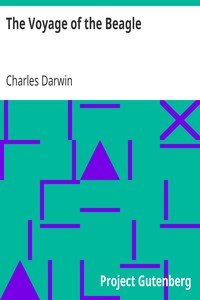
Read now or download (free!)
Similar books, about this ebook.
- Privacy policy
- About Project Gutenberg
- Terms of Use
- Contact Information

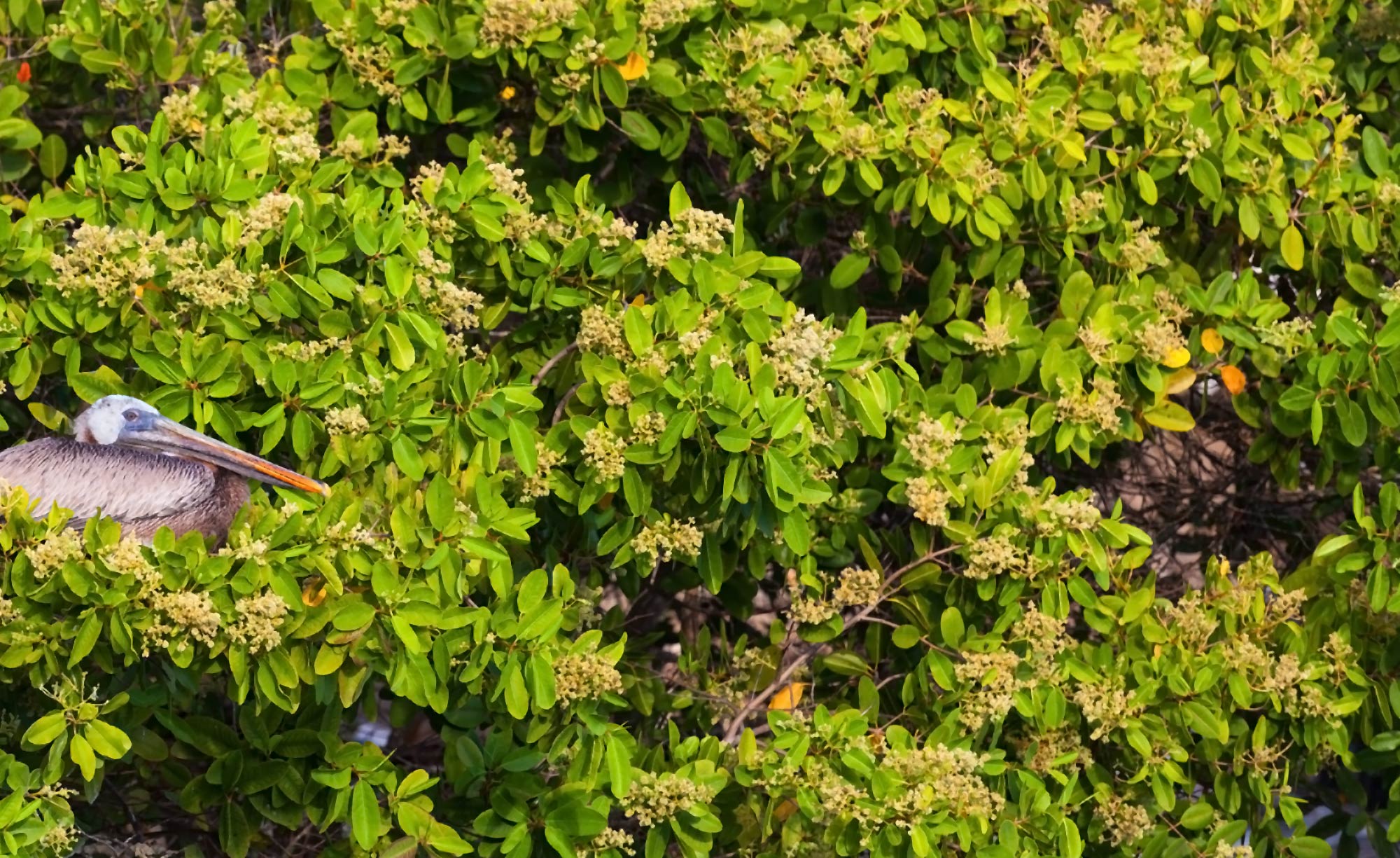
- Acknowledgements
- Accessibility
- Privacy & legal
- Sustainability
this text does not appear on the site, the glossary page is constructed automatically from the post type.
Discovering Galapagos

Charles Darwin 1/2: Voyage of the Beagle
Charles Darwin was a passenger on the HMS Beagle from 1832 to 1836, which had been chartered to survey the South American coast.
A voyage of discovery
Captain Robert FitzRoy had seen the need for a geologist during HMS Beagle’s second survey of the South American coast. It was Charles Darwin who was eventually suggested to accompany Fitzroy on this voyage. The Beagle reached the Galapagos Islands on 15 September 1835, nearly four years after setting off from Plymouth, England.
The visit to the Galapagos would prove the starting point from which Darwin would develop his theories on evolution and secure his enduring fame. Like many visitors to the Islands before him, Darwin considered them bleak and ugly. Darwin had 34 days to collect species and record observations around the Islands.
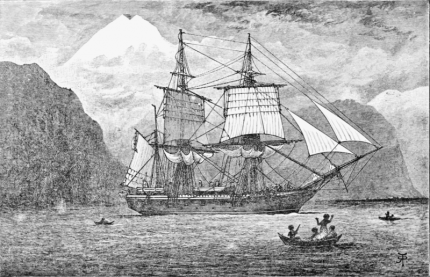
Painting of HMS Beagle by R.T. Pritchett in 1900
Although he was employed as a geologist, Darwin had also been an avid collector of fossils, animals and plants during his voyage and took extensive notes on all he observed. He described the natural history of Galapagos as “ very remarkable: it seems to be a little world within itself; the greater number of its inhabitants, both vegetable and animal, being found nowhere else.”
Darwin travelled around the Galapagos Islands for 5 weeks visiting:
- San Cristobal 17 -22 September
- Floreana 24 – 27 September
- Isabela 29 September – 02 October
- Santiago 08 – 17 October
You can find out more about the voyage of the HMS Beagle here .
Next: Charles Darwin – Origin of Species: Darwin’s Impact
Charles Darwin and The Voyage Of The Beagle
a Scroll Storytelling
Beagle sailed from Plymouth Sound on 27 December 1831 under the command of Captain Robert FitzRoy. While the expedition was originally planned to last two years, it lasted almost five—Beagle did not return until 2 October 1836. Darwin spent most of this time exploring on land (three years and three months on land; 18 months at sea).
Plymouth, U.K.
"Her Majesty's ship Beagle, a ten-gun brig, under the command of Captain Fitz Roy, R. N., sailed from Devonport on the 27th of December, 1831...to complete the survey of Patagonia and Tierra del Fuego..."
Canary Islands
"On the 6th of January we reached Teneriffe but were prevented landing by fears of our bringing the cholera. The next morning we saw the sun rise behind the rugged outline of the Grand Canary island and suddenly illuminate the Peak of Teneriffe whilst the lower parts were veiled in fleecy clouds."
"On the 16th of January, 1832, we anchored at Porto Praya, in St. Jago, the chief island of the Cape de Verd archipelago. It then first dawned on me that I might perhaps write a book..."
Saint Peter and Paul Rocks
"In crossing the Atlantic we hove to the morning of February 16th close to the island of St Paul's. We found on St. Paul's only two kinds of birds—the booby and the noddy."
Fernando Noronha, Brazil
"The whole island is covered with wood; but from the dryness of the climate there is no appearance of luxuriance."
Salvador, Brazil
"The day has passed delightfully. Delight itself, however, is a weak term to express the feelings of a naturalist who, for the first time, has wandered by himself in a Brazilian forest."
Abrolhos Islets, Brazil
"...when not far distant from the Abrolhos Islets, my attention was called to a reddish-brown appearance in the sea. These are minute cylindrical confervae, in bundles or rafts of from twenty to sixty in each."
Rio de Janeiro, Brazil
"During our stay at Brazil I made a large collection of insects."
Montevideo, Uruguay
"We anchored at Monte Video. The Beagle was employed in surveying the extreme southern and eastern coasts of America, south of the Plata, during the two succeeding years."
Bahía Blanca, Argentina
"We passed the night in Punta Alta, and I employed myself in searching for fossil bones; this point being a perfect catacomb for monsters of extinct races."
Port Desire, Argentina
"The guanaco, or wild llama, is the characteristic quadruped of the plains of Patagonia; it is the South American representative of the camel of the East. They are generally wild and extremely wary."
Tierra del Fuego
"In the morning the Captain sent a party to communicate with the Fuegians. When we came within hail, one of the four natives who were present advanced to receive us, and began to shout most vehemently, wishing to direct us where to land."
"I do not think that our Fuegians were much more superstitious than some of the sailors; for an old quartermaster firmly believed that the successive heavy gales, which we encountered off Cape Horn, were caused by our having the Fuegians on board."
York Minster
“…we fetched within a few miles of the great rugged mountain of York Minster (so called by Captain Cook), when a violent squall compelled us to shorten sail and stand out to sea.”
Falkland Islands
"An undulating land, with a desolate and wretched aspect, is everywhere covered by a peaty soil and wiry grass, of one monotonous brown colour."
Rio Negro, Argentina
"The country near the mouth of the river is wretched in the extreme: on the south side a long line of perpendicular cliffs commences, which exposes a section of the geological nature of the country."
Gregory Bay
Río santa cruz, argentina.
"...scarcely anything was known about this large river. Captain Fitz Roy now determined to follow its course as far as time would allow."
Valparaiso, Chile
"The Beagle anchored late at night in the bay of Valparaiso. When morning came, everything appeared delightful. After Tierra del Fuego, the climate felt quite delicious. The view from the anchorage is very pretty."
Chiloé Island, Chile
"In the wooded island of Chiloe, which has an extremely humid climate, this little bird [Trochilus forficatus], skipping from side to side amidst the dripping foliage, is perhaps more abundant than almost any other kind."

Valdivia, Chile
"There is not much cleared land near Valdivia: after crossing a river at the distance of a few miles, we entered the forest, and then passed only one miserable hovel, before reaching our sleeping-place for the night."
Concepción, Chile
"The mayor-domo of the estate quickly rode down to tell me the terrible news of the great earthquake of the 20th:—'That not a house in Concepcion or Talcahuano (the port) was standing; that seventy villages were destroyed; and that a great wave had almost washed away the ruins of Talcahuano.'"
Iquique, Chile
"The town contains about a thousand inhabitants, and stands on a little plain of sand at the foot of a great wall of rock, 2000 feet in height, here forming the coast. The whole is utterly desert."
"Lima stands on a plain in a valley, formed during the gradual retreat of the sea. Steep barren hills rise like islands from the plain, which is divided, by straight mud-walls, into large green fields. In these scarcely a tree grows excepting a few willows, and an occasional clump of bananas and of oranges."
Galápagos, Equador
"As I was walking along I met two large tortoises, each of which must have weighed at least two hundred pounds: one was eating a piece of cactus, and as I approached, it stared at me and slowly walked away; the other gave a deep hiss, and drew in its head."
"The survey of the Galapagos Archipelago being concluded, we steered towards Tahiti and commenced our long passage of 3,200 miles."
Pahia, New Zeland
"New Zealand is favoured by one great natural advantage; namely, that the inhabitants can never perish from famine. The whole country abounds with fern: and the roots of this plant, if not very palatable, yet contain much nutriment."
Sydney, Australia
"At last we anchored within Sydney Cove. In the evening I walked through the town, and returned full of admiration at the whole scene. "
Hobart, Tasmania
"Late in the evening we anchored in the snug cove on the shores of which stands the capital of Tasmania. The first aspect of the place was very inferior to that of Sydney; the latter might be called a city, this is only a town. "
Cocos Islands
"The ring-formed reef of the lagoon-island is surmounted in the greater part of its length by linear islets. On entering, the scene was very curious and rather pretty; its beauty, however, entirely depended on the brilliancy of the surrounding colours."
"In the morning we passed round the northern end of Mauritius. From this point of view the aspect of the island equalled the expectations raised by the many well-known descriptions of its beautiful scenery."
Cape Town, South Africa
"With regard to the number of large quadrupeds, there certainly exists no quarter of the globe which will bear comparison with Southern Africa."
"This island, the forbidding aspect of which has been so often described, rises abruptly like a huge black castle from the ocean. Near the town, as if to complete nature's defence, small forts and guns fill up every gap in the rugged rocks."
Pernambuco, Brazil
"The flat swampy land on which Pernambuco stands is surrounded, at the distance of a few miles, by a semicircle of low hills, or rather by the edge of a country elevated perhaps two hundred feet above the sea."
"...thence we proceeded to the Azores, where we stayed six days."
Falmouth, U.K.
"On the 2nd of October we made the shores of England; and at Falmouth I left the Beagle, having lived on board the good little vessel nearly five years."
London, U.K.
23 years after Darwin's return, On the Origin of Species by means of Natural Selection, or the Preservation of Favoured Races in the Struggle for Life is published by John Murray.

Hi, I'm Carlos Toledo. A Product Designer based in Florianopolis, Brazil focused on designing and developing amazing web experiences
This project was developed using Mapbox Studio, Mapbox GL JS library and Webflow. Feel free to clone this project use it in your own way.

Want to create or adapt books like this? Learn more about how Pressbooks supports open publishing practices.
Charles Darwin and the voyage of the Beagle
Charles Darwin travelled the world on the HMS Beagle for five years from 1831 to 1836. This journey had a crucial impact on the development of his theories of evolution. This interactive timeline outlines the major events in this significant voyage.
To navigate through the timeline, you can either click on the arrow on the right of the text, or click on the tabs on the timeline itself, or click on the ship icon in the map. You can move forwards and backwards through the timeline.
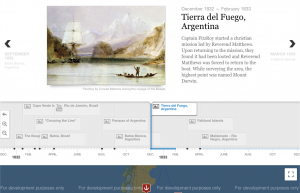
The Life of Charles Darwin Copyright © by Charles Darwin University is licensed under a Creative Commons Attribution-ShareAlike 4.0 International License , except where otherwise noted.
Share This Book

- Writing, Research & Publishing Guides

Enjoy fast, free delivery, exclusive deals, and award-winning movies & TV shows with Prime Try Prime and start saving today with fast, free delivery
Amazon Prime includes:
Fast, FREE Delivery is available to Prime members. To join, select "Try Amazon Prime and start saving today with Fast, FREE Delivery" below the Add to Cart button.
- Cardmembers earn 5% Back at Amazon.com with a Prime Credit Card.
- Unlimited Free Two-Day Delivery
- Streaming of thousands of movies and TV shows with limited ads on Prime Video.
- A Kindle book to borrow for free each month - with no due dates
- Listen to over 2 million songs and hundreds of playlists
- Unlimited photo storage with anywhere access
Important: Your credit card will NOT be charged when you start your free trial or if you cancel during the trial period. If you're happy with Amazon Prime, do nothing. At the end of the free trial, your membership will automatically upgrade to a monthly membership.
Buy new: $17.00 $17.00 FREE delivery Saturday, May 4 on orders shipped by Amazon over $35 Ships from: Amazon.com Sold by: Amazon.com
Return this item for free.
Free returns are available for the shipping address you chose. You can return the item for any reason in new and unused condition: no shipping charges
- Go to your orders and start the return
- Select the return method
Buy used: $6.38
Fulfillment by Amazon (FBA) is a service we offer sellers that lets them store their products in Amazon's fulfillment centers, and we directly pack, ship, and provide customer service for these products. Something we hope you'll especially enjoy: FBA items qualify for FREE Shipping and Amazon Prime.
If you're a seller, Fulfillment by Amazon can help you grow your business. Learn more about the program.

Download the free Kindle app and start reading Kindle books instantly on your smartphone, tablet, or computer - no Kindle device required .
Read instantly on your browser with Kindle for Web.
Using your mobile phone camera - scan the code below and download the Kindle app.

Image Unavailable

- To view this video download Flash Player
Follow the authors

The Voyage of the Beagle (Penguin Classics) Paperback – Abridged, January 1, 1989
Purchase options and add-ons.
- Print length 448 pages
- Language English
- Publisher Penguin Classics
- Publication date January 1, 1989
- Dimensions 5.04 x 0.78 x 7.76 inches
- ISBN-10 014043268X
- ISBN-13 978-0140432688
- See all details

Frequently bought together

Similar items that may deliver to you quickly

Editorial Reviews
About the author, excerpt. © reprinted by permission. all rights reserved..
The natural history of this archipelago is very remarkable: it seems to be a little world within itself; the greater number of its inhabitants, both vegetable and animal, being found nowhere else. As I shall refer to this subject again, I will only here remark, as forming a striking character on first landing, that the birds are strangers to man. So tame and unsuspecting were they, that they did not even understand what was meant by stones being thrown at them; and quite regardless of us, they approached so close that any number of them might have been killed with a stick.
The Beagle sailed round Chatham Island, and anchored in several bays. One night I slept on shore, on a part of the island where some black cones – the former chimneys of the subterranean heated fluids – were extraordinarily numerous. From one small eminence, I counted sixty of these truncated hillocks, which were all surmounted by a more or less perfect crater. The greater number consisted merely of a ring of red scoriae, or slags, cemented together: and their height above the plain of lave, was not more than from 50 to 100 feet. From their regular form, they gave the country a workshop appearance, which strongly reminded me of those parts of Stratfordshire where the great iron foundries are most numerous.
Product details
- Publisher : Penguin Classics; Abridged edition (January 1, 1989)
- Language : English
- Paperback : 448 pages
- ISBN-10 : 014043268X
- ISBN-13 : 978-0140432688
- Item Weight : 2.31 pounds
- Dimensions : 5.04 x 0.78 x 7.76 inches
- #324 in Scientist Biographies
- #384 in Travelogues & Travel Essays
- #546 in Traveler & Explorer Biographies
About the authors
Charles darwin.
Charles Robert Darwin, (/ˈdɑːrwɪn/; 12 February 1809 – 19 April 1882) was an English naturalist and geologist, best known for his contributions to evolutionary theory. He established that all species of life have descended over time from common ancestors, and in a joint publication with Alfred Russel Wallace introduced his scientific theory that this branching pattern of evolution resulted from a process that he called natural selection, in which the struggle for existence has a similar effect to the artificial selection involved in selective breeding.
Darwin published his theory of evolution with compelling evidence in his 1859 book On the Origin of Species, overcoming scientific rejection of earlier concepts of transmutation of species. By the 1870s, the scientific community and much of the general public had accepted evolution as a fact. However, many favoured competing explanations and it was not until the emergence of the modern evolutionary synthesis from the 1930s to the 1950s that a broad consensus developed in which natural selection was the basic mechanism of evolution. In modified form, Darwin's scientific discovery is the unifying theory of the life sciences, explaining the diversity of life.
Darwin's early interest in nature led him to neglect his medical education at the University of Edinburgh; instead, he helped to investigate marine invertebrates. Studies at the University of Cambridge (Christ's College) encouraged his passion for natural science. His five-year voyage on HMS Beagle established him as an eminent geologist whose observations and theories supported Charles Lyell's uniformitarian ideas, and publication of his journal of the voyage made him famous as a popular author.
Puzzled by the geographical distribution of wildlife and fossils he collected on the voyage, Darwin began detailed investigations and in 1838 conceived his theory of natural selection. Although he discussed his ideas with several naturalists, he needed time for extensive research and his geological work had priority. He was writing up his theory in 1858 when Alfred Russel Wallace sent him an essay that described the same idea, prompting immediate joint publication of both of their theories. Darwin's work established evolutionary descent with modification as the dominant scientific explanation of diversification in nature. In 1871 he examined human evolution and sexual selection in The Descent of Man, and Selection in Relation to Sex, followed by The Expression of the Emotions in Man and Animals. His research on plants was published in a series of books, and in his final book, he examined earthworms and their effect on soil.
Darwin has been described as one of the most influential figures in human history; he was honoured by burial in Westminster Abbey.
Bio from Wikipedia, the free encyclopedia. Photo by Henry Maull (1829–1914) and John Fox (1832–1907) (Maull & Fox) [Public domain], via Wikimedia Commons.
Michael Neve
Discover more of the author’s books, see similar authors, read author blogs and more

Janet Browne
Customer reviews.
Customer Reviews, including Product Star Ratings help customers to learn more about the product and decide whether it is the right product for them.
To calculate the overall star rating and percentage breakdown by star, we don’t use a simple average. Instead, our system considers things like how recent a review is and if the reviewer bought the item on Amazon. It also analyzed reviews to verify trustworthiness.
Reviews with images

- Sort reviews by Top reviews Most recent Top reviews
Top reviews from the United States
There was a problem filtering reviews right now. please try again later..
Top reviews from other countries
- Amazon Newsletter
- About Amazon
- Accessibility
- Sustainability
- Press Center
- Investor Relations
- Amazon Devices
- Amazon Science
- Sell on Amazon
- Sell apps on Amazon
- Supply to Amazon
- Protect & Build Your Brand
- Become an Affiliate
- Become a Delivery Driver
- Start a Package Delivery Business
- Advertise Your Products
- Self-Publish with Us
- Become an Amazon Hub Partner
- › See More Ways to Make Money
- Amazon Visa
- Amazon Store Card
- Amazon Secured Card
- Amazon Business Card
- Shop with Points
- Credit Card Marketplace
- Reload Your Balance
- Amazon Currency Converter
- Your Account
- Your Orders
- Shipping Rates & Policies
- Amazon Prime
- Returns & Replacements
- Manage Your Content and Devices
- Recalls and Product Safety Alerts
- Conditions of Use
- Privacy Notice
- Consumer Health Data Privacy Disclosure
- Your Ads Privacy Choices
The Straits Times
- International
- Print Edition
- news with benefits
- SPH Rewards
- STClassifieds
- Berita Harian
- Hardwarezone
- Shin Min Daily News
- Tamil Murasu
- The Business Times
- The New Paper
- Lianhe Zaobao
- Advertise with us
NUS science historian tracks origins and evolution of Charles Darwin’s library
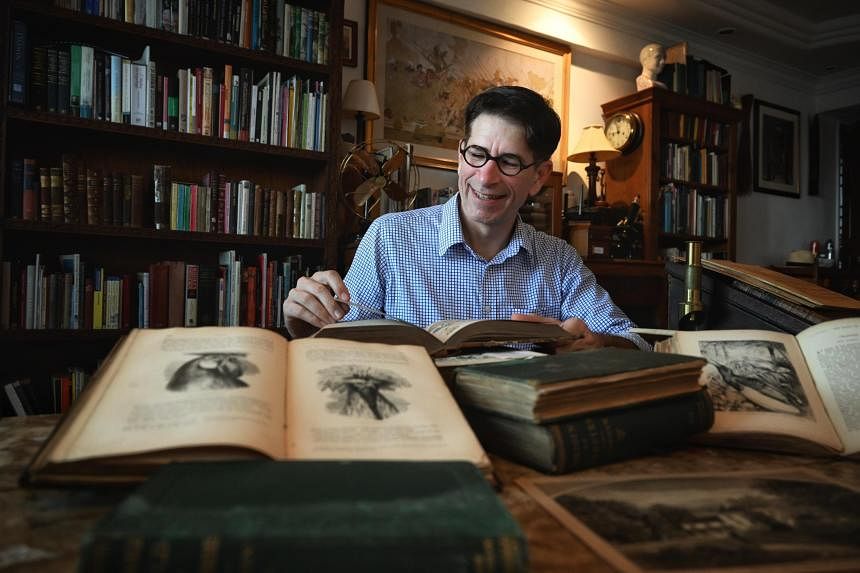
SINGAPORE – An infamous book called Das Kapital by German philosopher Karl Marx and conspiracy theories linked to the lost city of Atlantis were among 13,000 tomes and publications that the father of evolution Charles Darwin kept in his personal library.
He did not just fixate on science and biology, but also had interests in farming, artwork and caricatures of himself.
These facts about the renowned British naturalist, who was born in 1809 and died in 1882, were unveiled by a National University of Singapore (NUS) science historian, who over 18 years painstakingly tracked down Darwin’s collections and rebuilt them virtually.
By mid-February, Dr John van Wyhe from the Department of Biological Sciences had what he believes to be the largest Darwin resource in the world, and probably the most comprehensive website on any historical person. The portal is called Darwin Online.
Scholars had long believed that Darwin’s library comprised about 1,480 books that were preserved at the University of Cambridge and his home, Down House, in England. But this turned out to be only 15 per cent of his library, said Dr van Wyhe.
The other 85 per cent were mostly lost and dispersed. Over nearly two decades, he and his team, including students, patiently sleuthed through historical catalogues, obscure references and private collections to tease out the repertoire that Darwin read and drew his own research from.
Gradually, the 1,480 books grew to 13,000 volumes and items, including rare books, letters, scientific pamphlets and newspaper clippings.
The backbone of the digital anthology is a 300-page catalogue listing nearly all those long-lost publications, with 9,700 links. Of the 9,700 links, more than 5,000 are in Darwin Online, including 851 transcribed texts and notes. The portal is also embedded with tens of thousands of images and illustrations.
Dr van Wyhe said: “If there was one thing I had to say about Darwin’s library, apart from it being big, is how astonishingly diverse it is... It’s really intimidating that someone could put together such an impressive library.”
The earliest of Darwin’s books recorded is from his time as a schoolboy at Shrewsbury School in England. Dated 1818, it is a textbook on modern and ancient geography written by the school’s headmaster.
Darwin is most well known for developing the theory of evolution by natural selection. This means that living things that are more adapted to their environment or “fitter” are more likely to survive. And this causes species to change and evolve over time.
This theory was laid out in his landmark publication, On The Origin Of Species , published in 1859.
Much of Darwin’s findings were based on his travels and discoveries during his five-year voyage on naval vessel HMS Beagle, from 1831 to 1836. He was in his 20s then, and while surveying places such as South America and the Galapagos Islands, he collected thousands of specimens, including fossils, birds and plants.
The Darwin Online project started in 2006 with mainly the naturalist’s own publications put up on the website. Over the next 18 years, Dr van Wyhe found several clues that he zeroed in on to find nearly everything else on the scientist’s bookshelves. “That was thousands of detective stories,” added the 52-year-old.
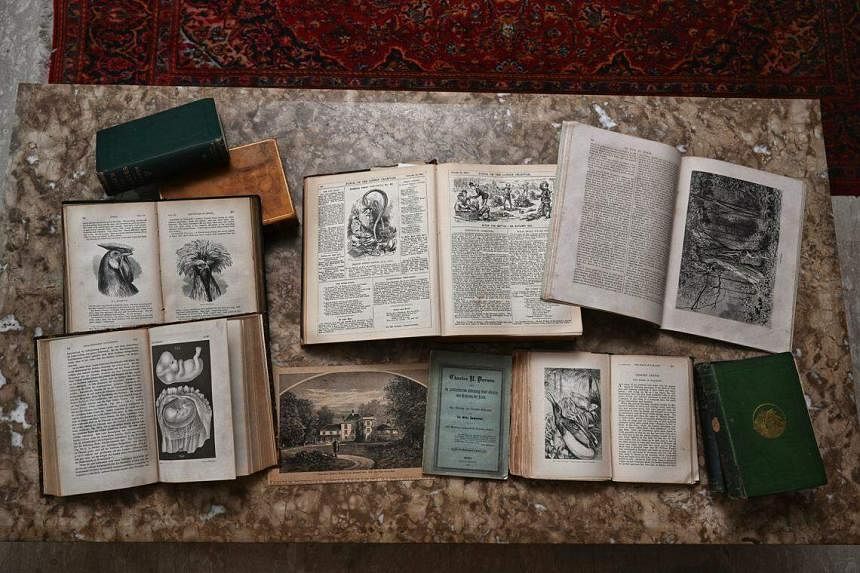
A major source that helped Dr van Wyhe uncover the library is an untapped 426-page catalogue of Darwin’s collections that was prepared for the naturalist in 1875. More than 400 missing titles were found in the handwritten catalogue, which was hidden in the University of Cambridge.
Many of the entries were tricky to identify because the book titles were abbreviated. At other times, he had to decipher unclear handwriting.
Dr van Wyhe and his team also scoured through many archived letters Darwin sent and received to uncover smaller publications such as pamphlets and newspaper clippings he collected. Darwin had thousands of pamphlets.
“And these (pamphlets) were not compiled as carefully. They were harder to find. But they were just as important scientific data for Darwin as the formal books,” he noted.
He added: “(His library) opens up to us, modern people, a window on how sophisticated the sciences already were back then.”
Gathering Darwin’s scientific tomes was academically intriguing, but what thrilled Dr van Wyhe were the quirky items that popped up now and then.
He recently found an article about dewclaws – extra toes that sit higher up on some dogs’ paws.
“The person who wrote this thought that (the dewclaws) were evidence of dogs’ evolutionary past. And he sent that to Darwin.”
Dr van Wyhe added that some people loved to send their conspiracy theories to Darwin, such as a Minnesota politician who wrote a book claiming that Atlantis was real. Greek philosopher Plato created the legend of Atlantis, describing it as a utopian civilisation.
The naturalist also kept other article clippings, such as those titled The Anatomy Of A Four-legged Chicken and The Hateful Or Colorado Grasshopper.
With Darwin’s library immortalised online, Dr van Wyhe said: “When you learn about the history of science, it teaches you about science in a way that modern science cannot do.
“The beginnings of your science can give you radically new perspectives and reveal things that you were unaware of because you didn’t take a broader perspective.”
- Darwin Online can be accessed for free at https://tinyurl.com/3sfaj7vy
Peering into Darwin’s bookshelves
Over nearly two decades, Singapore-based science historian John van Wyhe dug into Charles Darwin’s past to uncover the rich repertoire of scientific books, letters and publications that he owned. Here are some of the snippets in this now-digitised library.
Das Kapital
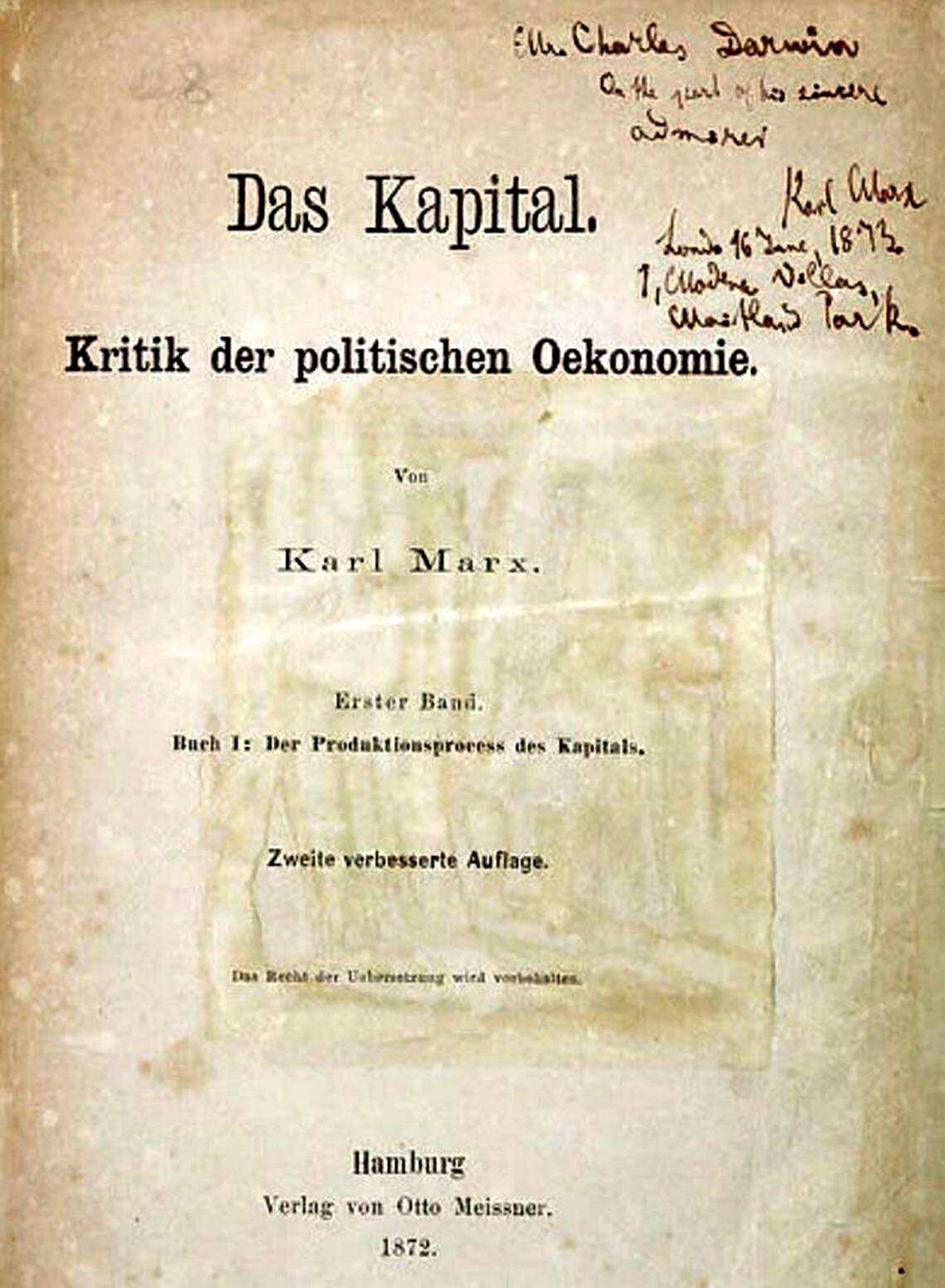
The father of communism, Karl Marx, was a fan of the father of evolution. Marx gifted Darwin a copy of one of his most famous works – Das Kapital – and inscribed on the title page: “On the part of his sincere admirer / Karl Marx.”
But Darwin apparently did not finish the book, as pages 106 to 882 are uncut, and remain bound together.
Atlantis: The Antediluvian World
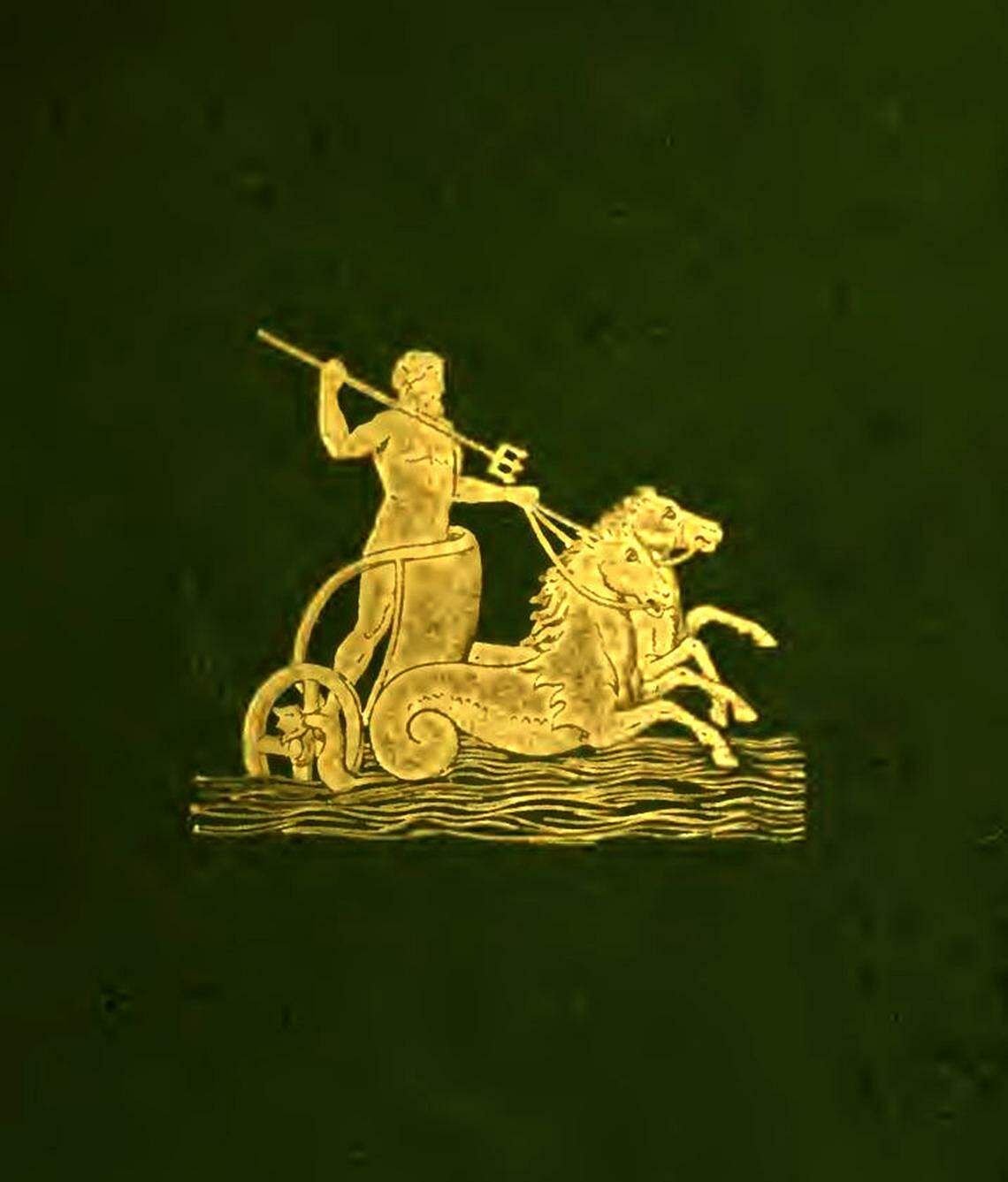
A cover of the book Atlantis: The Antediluvian World, written by a Minnesota politician, Ignatius Donnelly, who believed that the fictional city of Atlantis was real.
Dr van Wyhe said several people sent Darwin their conspiracy theories.
Photographs of bacteria
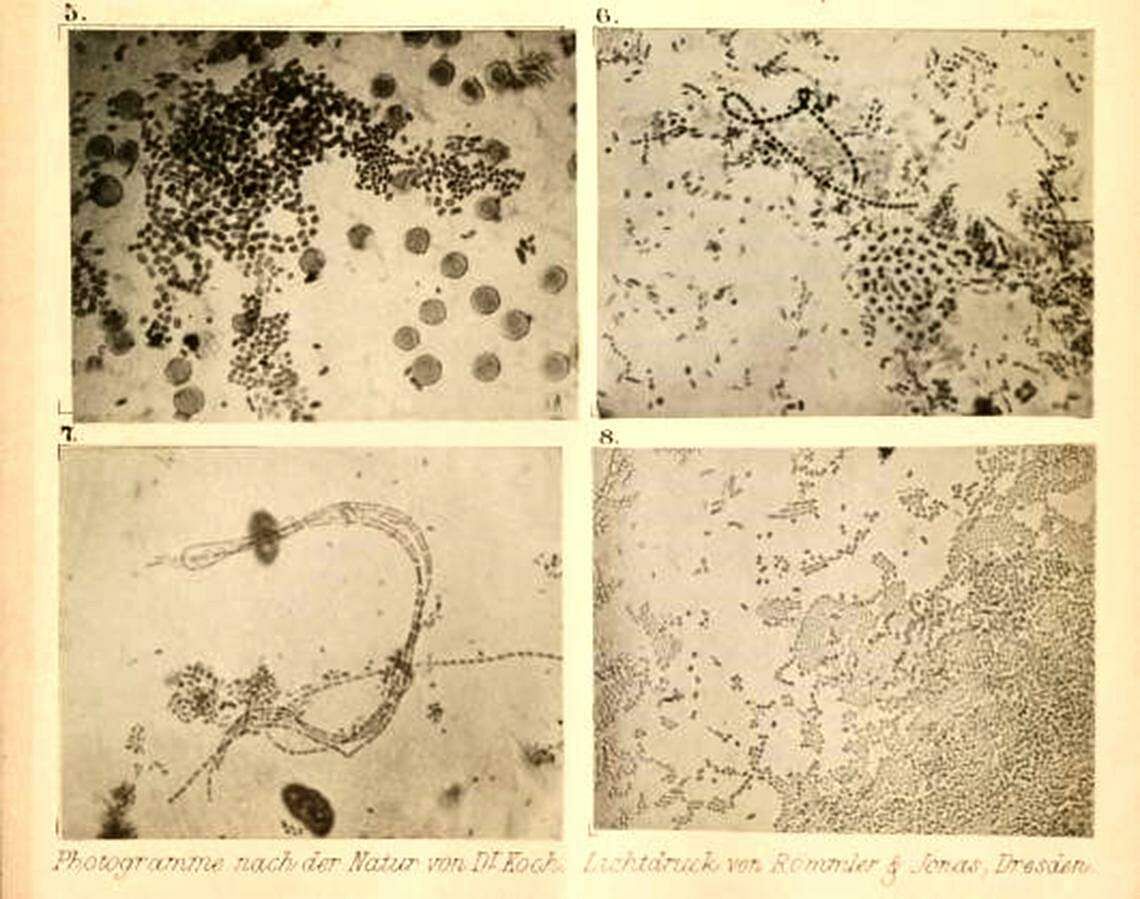
The first published photographs of bacteria in an 1877 German scientific periodical sent to Darwin.
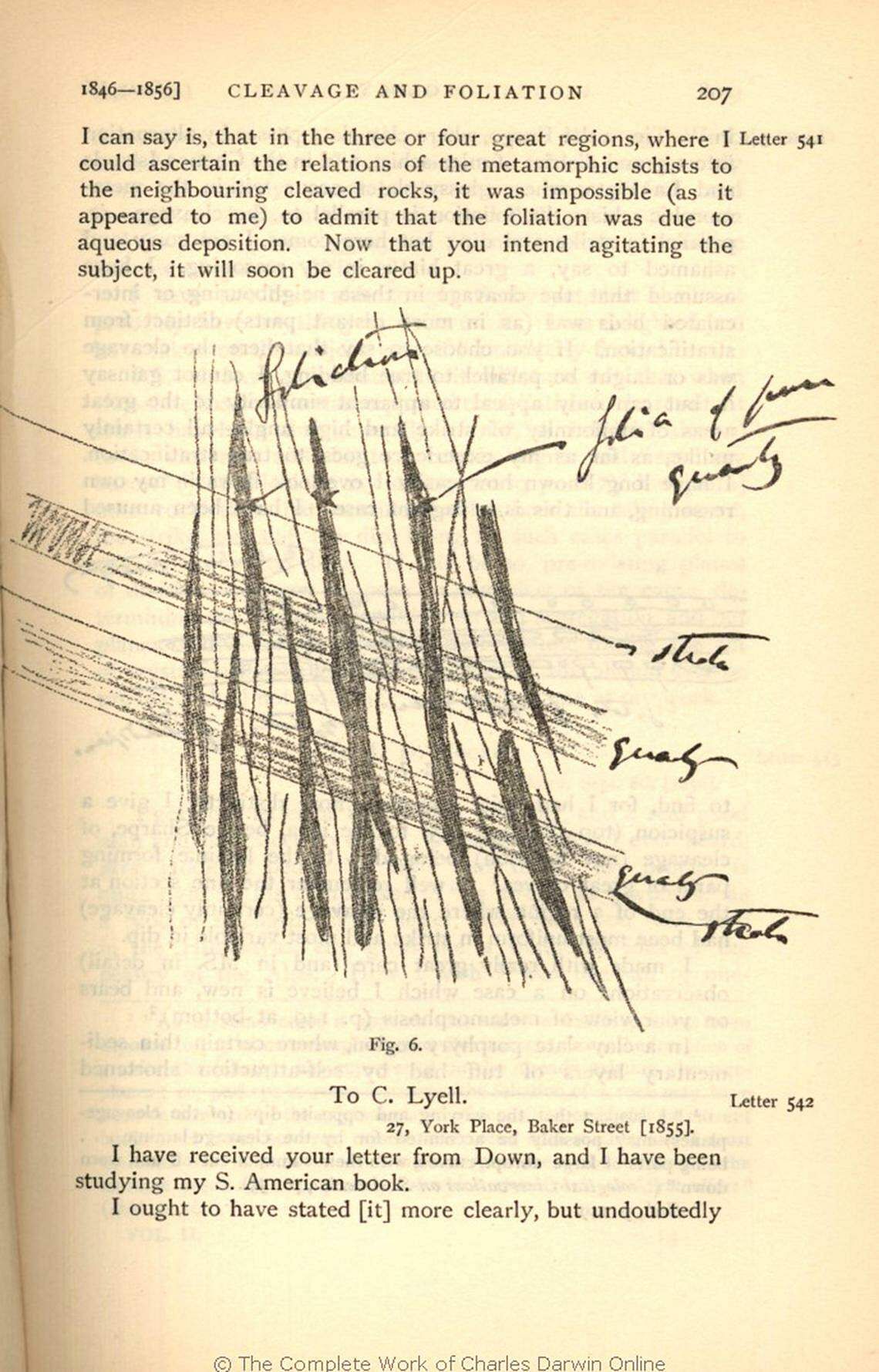
Letters were very much a part of Darwin’s scientific archive, as they helped him gather data from others to substantiate his theories and discuss science with his counterparts.
This is a snippet of a letter Darwin wrote to C Lyell in the 1850s. The letter discussed geology and the foliation of rocks, with an accompanying diagram. This page is part of a compilation of letters that Darwin’s third son helped turn into a book in 1903.
On the Origin of Species
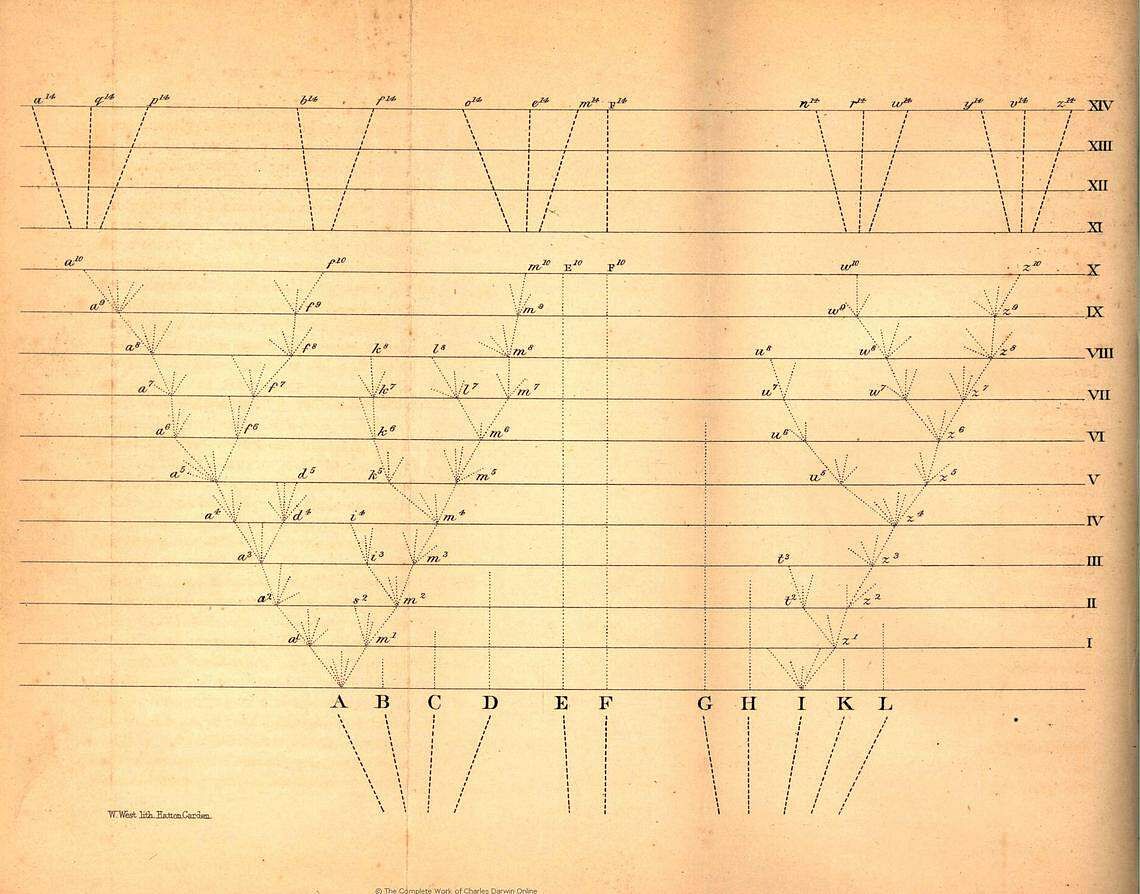
Known to be the most important biological book ever written, Darwin’s On The Origin Of Species, published in 1859, introduced the theory that living things evolve over time through natural selection.
The diagram is the only illustration in the scientific tome. The branching diagram shows how similarities between species can be explained by their descent from common ancestors.
At that time, Darwin’s theories were controversial to sections of society because they conflicted with religious beliefs, for instance.
Caricatures
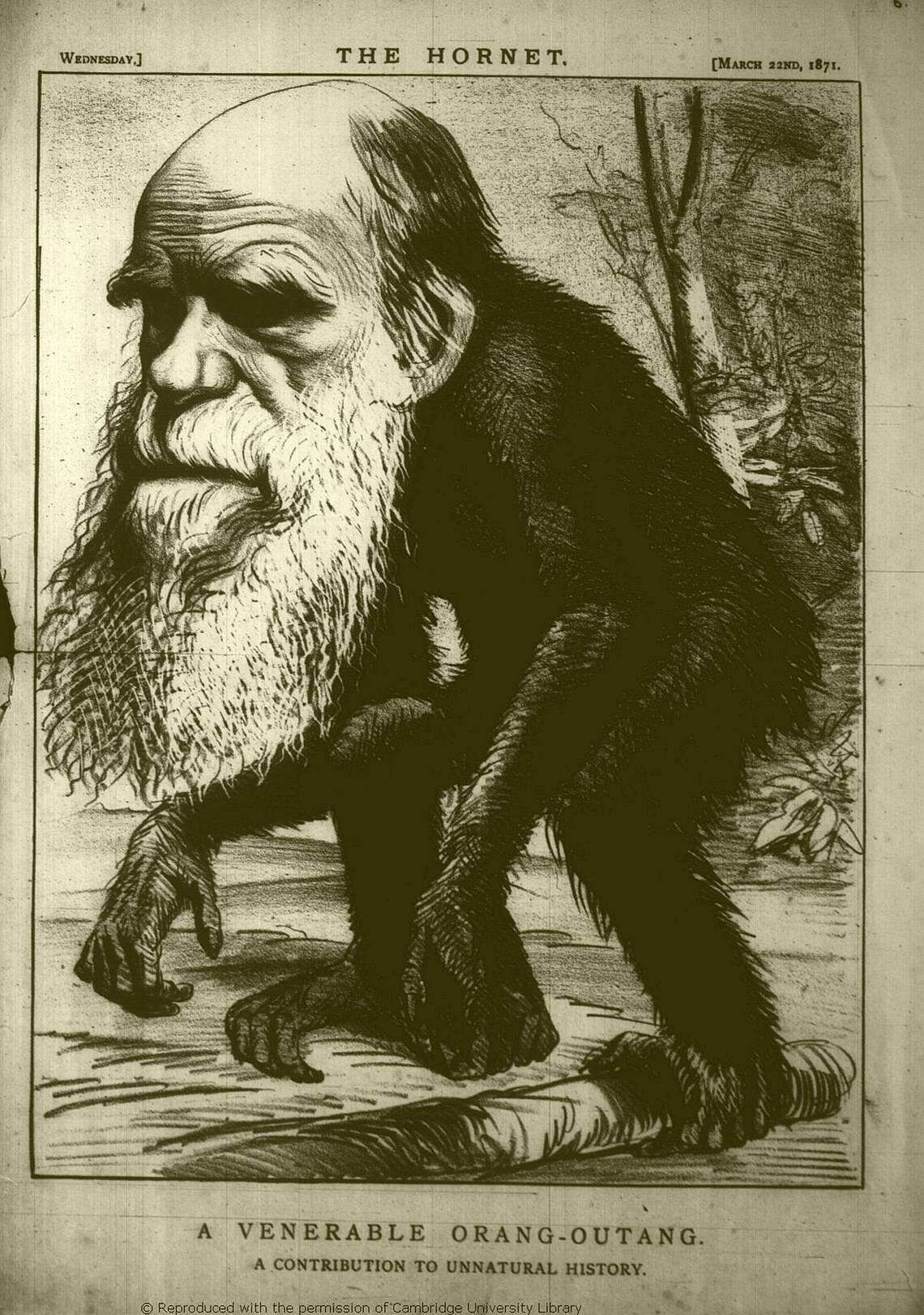
Cartoons and caricatures, especially of himself, could have been a source of amusement for Darwin – he kept numerous clippings of such artwork.
These caricatures, including one of Darwin’s head on an orang utan’s body published in The Hornet magazine, show how the naturalist’s work became part of 19th-century popular culture.
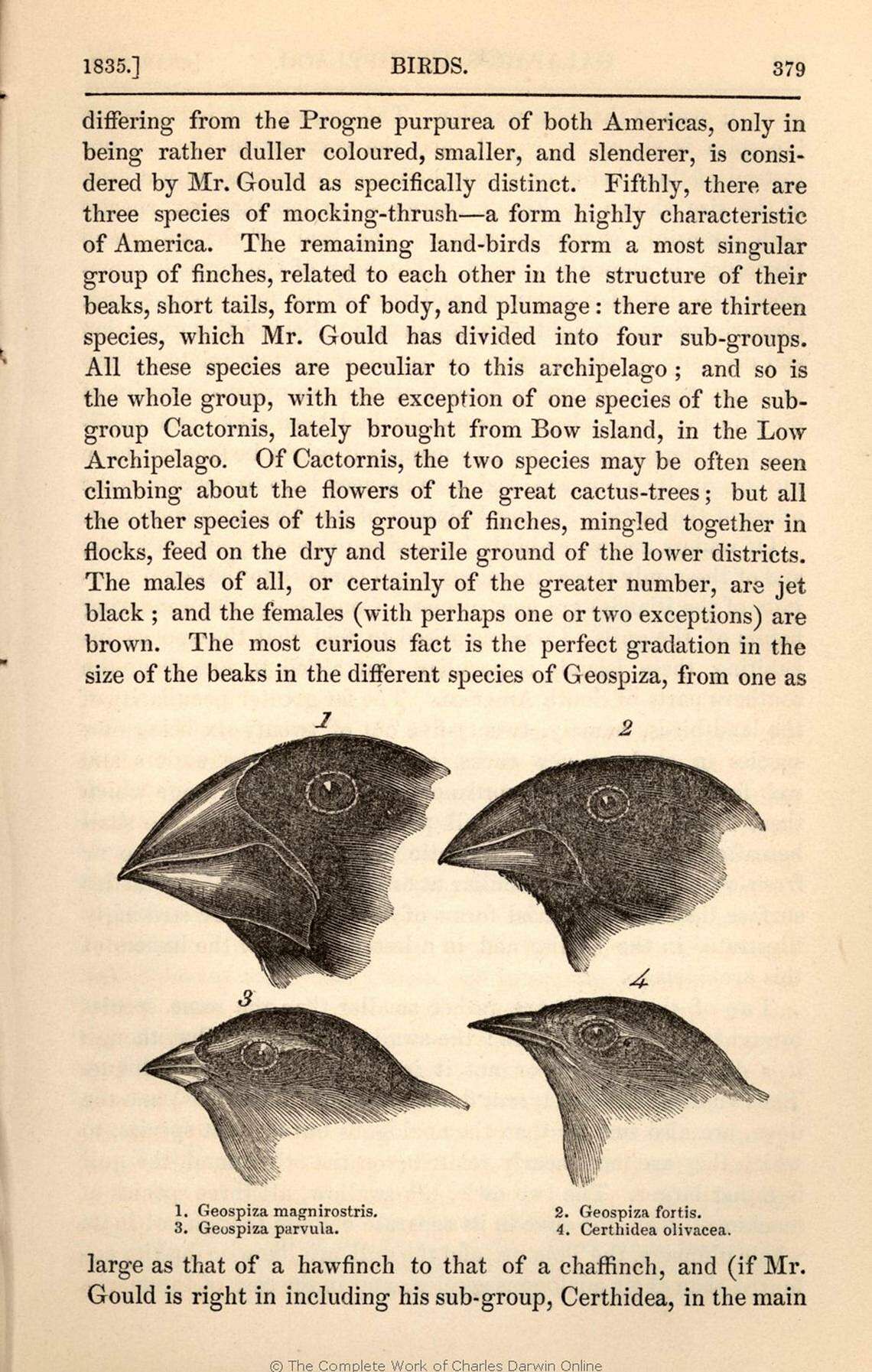
A page from Darwin’s classic account describing his travels and discoveries during his five-year voyage on the HMS Beagle, from 1831 to 1836.
Darwin’s illustration of the finch beaks has become one of the most iconic images in all of science. Many people have even had that image tattooed onto themselves, said Dr van Wyhe.
A book on colours
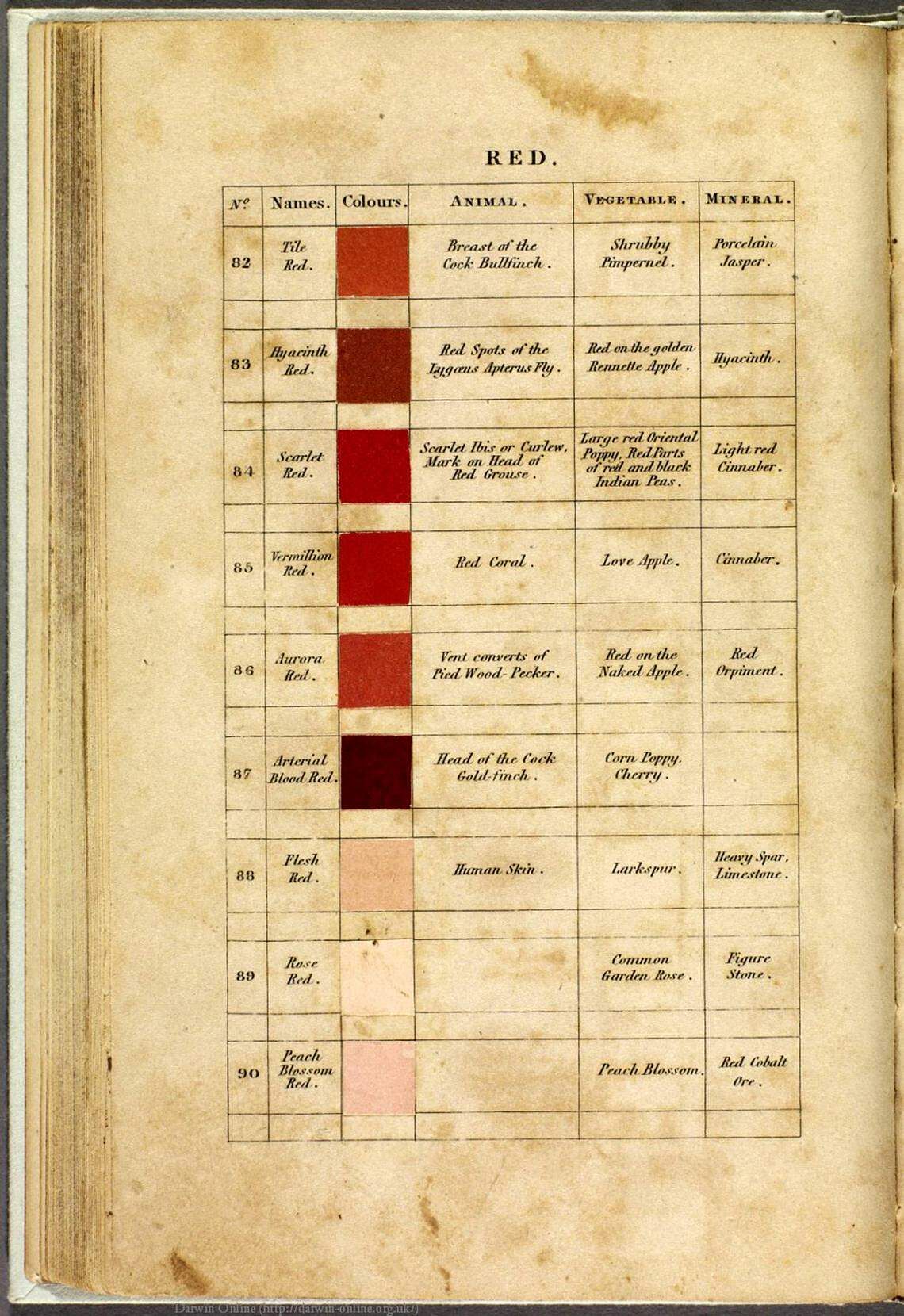
One of the books Darwin took with him on the voyage of the Beagle was Werner’s Nomenclature Of Colours. He referred to it to record the colours of the specimens he collected on his explorations.
Darwin’s children would later play with the book to match and name colours. The naturalist married his first cousin Emma, and they had 10 children, of whom seven survived to adulthood.
Scientific pamphlets
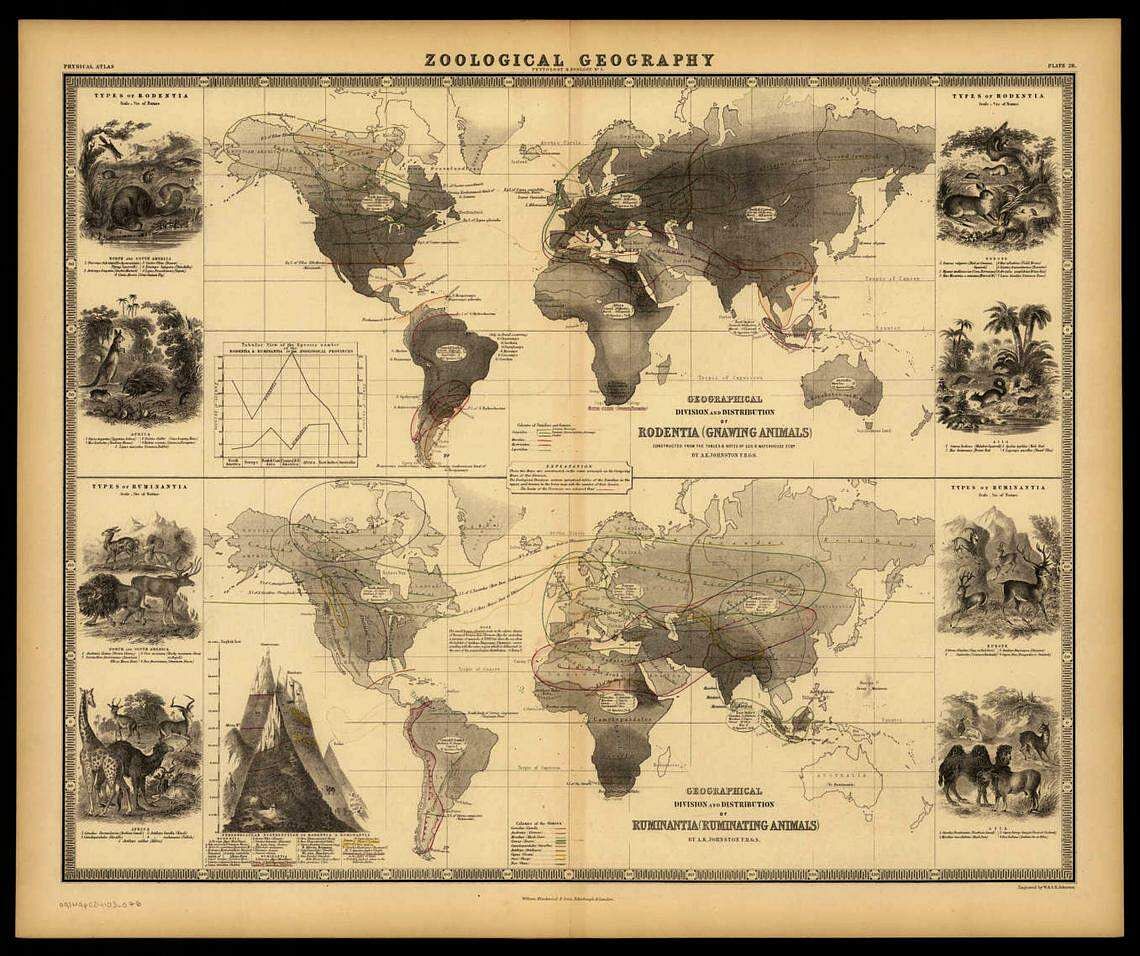
In Darwin’s hefty pamphlet collection is this 1856 table of zoological geography, which shows how certain animal types are found only in specific parts of the world.
Join ST's WhatsApp Channel and get the latest news and must-reads.
Read 3 articles and stand to win rewards
Spin the wheel now

- Entertainment
Shrewsbury's Doodle Boy picks fellow town lad, 10, to win Darwin drawing competition
A talented 10-year-old artist from Shrewsbury has been chosen as the winner of the prestigious Darwin Doodle competition out of over 250 entries from around the country.
Watch more of our videos on Shots! and live on Freeview channel 276
Solomon Horne's doodle celebrating the life and discoveries of Charles Darwin was selected by renowned doodle artist Joe Whale AKA The Doodle Boy who sprang to prominence after pictures of his work on the walls of a Shrewsbury restaurant went viral in 2019.
Sol is in Year 6 at Coleham Primary School and following in the artistic footsteps of Joe. who has since travelled the globe showing off his artistic skills.

The Darwin Doodle competition was organised by Darwin200, a non-profit dedicated to commemorating the 200th anniversary of the famous naturalist's ground-breaking voyage on HMS Beagle.
They were supported by the Darwin Centre in Wales, Shrewsbury Art Trail, the Soden Collection and Wakelet.
The competition invited children aged seven to 18 to submit doodles illustrating Darwin's evolutionary theories and adventures.
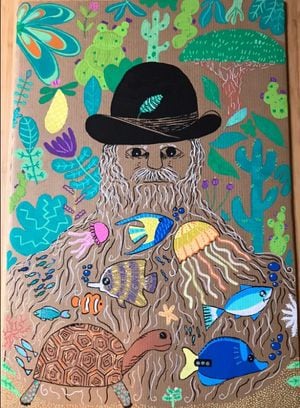
Andrew Fox, co-founder of Darwin200 and founder of artwork platform Artwork Platform Systems (APS) said: "There must be something in the water in Shrewsbury.
"There appears to be a disproportionate amount of artistic talent to go alongside the town's renowned scientific heritage. Of course, Charles Darwin himself hailed from Shrewsbury."
Joe Whale, whose doodle art has garnered international acclaim, said: "I was blown away by Sol's doodle and his creativity in capturing so many key aspects of Darwin's incredible journey and discoveries."
Whale was commissioned by Darwin200 in July 2023 to create his own special Darwin doodle ahead of the Oosterschelde tall ship setting sail on its global voyage retracing the path of the HMS Beagle.
The ship is serving as a floating lab for 200 "Young Darwin Leaders" from all over the world who are conducting experiments at the various ports Darwin visited.
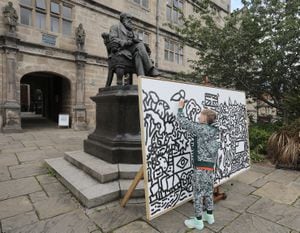
As the Darwin Doodle winner, Sol Horne will receive Doodle Boy t-shirts, Darwin books and a trip for two to the Galapagos Islands to meet the tall ship which stays for a month. His doodle will also be featured on the Darwin200 website and social media channels.
Sol said: "I'm so excited and honoured to win this contest.
"Learning about Darwin's bold spirit of exploration and his amazing discoveries about evolution really inspired me.
"I can't wait to develop my doodling skills further and who knows, maybe unlock some new scientific insights of my own someday!"
Andrew Fox believes the abundance of youth scientific and artistic talent in Darwin's hometown bodes well for inspiring future generations.
"Charles Darwin showed us the incredible insights that can emerge from closely observing the world around us with curiosity and an open mind.
"With bright young talents like Sol leading the way, perhaps Shrewsbury will produce the next Darwin or uplift the arts to new heights of creativity."
Doodle boy Joe Whale said: "It took me quite a while to establish a winner. I went with Sol Horne from Shrewsbury.
"I think it was a very good piece of art. There is a lot of a lot of different points that I really liked - especially Darwin's presence in the picture, on the cardboard background, all the colours and his eyes especially drew me into the picture, as well as highlighting the different parts of Darwin's legacy.
"So all the wildlife and the plants and the flora and fauna that really made him look like a protector of wildlife, which is pretty much what he is".
Sol Horne says: "I was amazed when I heard I had won the Darwin200 Doodle competition. The most exciting part was winning a once in a lifetime adventure to the Galápagos Islands to see all the animals I love drawing.”
Jonathan Soden of Soden Collection says: “Sol's artwork is a testament to the boundless creativity that young minds possess.
"At just 10 years old, Sol has captured hearts and minds with their inspiring piece.
"Congratulations to Sol, and a heartfelt thanks to the Doodle Boy for recognising and celebrating their talent. The Galapagos Islands await, a fitting reward for such a remarkable achievement!”
Jess Richards, head of Shrewsbury Art Trail said: "Sol's doodle brilliantly captures the wonder and curiosity that fueled Darwin's voyage of discovery. It's inspiring to see a young artist from Darwin's hometown creating this vibrant celebration of evolution and adventure. Shrewsbury's artistic talent shines bright!"
Samantha Williams, head of the Darwin Centre in Wales, said: "We loved this entry by Sol. His use of colour and vast range of species offers us a glimpse into the imagination of a budding artist whilst also highlighting the important work of Charles Darwin who collected a range of plants, animals, and fossils on his voyage on the HMS Beagle whilst working towards his theory of natural selection and that all species are linked in a tree of life."

27 dogs in Shrewsbury looking for their 'forever home' Viral news | 12 hours ago
Residents blamed for blocking drains as human waste spills into streets of Shrewsbury development Plus Environment | 12 hours ago
I visited one of Bridgnorth’s most handsome restaurants - this is my honest review Plus Food and Drink | 9 hours ago
Fed up with 'cold' snap? Met Office reveals when Shropshire will get warmer Environment | 4 hours ago
These Shropshire homes are going under the hammer at auction in the next few weeks - and most are less than £100K Property | 4 hours ago

Study at Cambridge
About the university, research at cambridge.
- Events and open days
- Fees and finance
- Student blogs and videos
- Why Cambridge
- Qualifications directory
- How to apply
- Fees and funding
- Frequently asked questions
- International students
- Continuing education
- Executive and professional education
- Courses in education
- How the University and Colleges work
- Visiting the University
- Term dates and calendars
- Video and audio
- Find an expert
- Publications
- International Cambridge
- Public engagement
- Giving to Cambridge
- For current students
- For business
- Colleges & departments
- Libraries & facilities
- Museums & collections
- Email & phone search
- Beagle Voyage
Darwin Correspondence Project
- About Darwin overview
- Family life overview
- Darwin on childhood
- Darwin on marriage
- Darwin’s observations on his children
- Darwin and fatherhood
- The death of Annie Darwin
- Visiting the Darwins
- Voyage of HMS Beagle
- What Darwin read overview
- Darwin’s student booklist
- Books on the Beagle
- Darwin’s reading notebooks
- On the Origin of Species overview
- The writing of "Origin"
- Abstract of Darwin’s theory
- Alfred Russel Wallace’s essay on varieties
- Charles Darwin and his publisher
- Review: The Origin of Species
- Darwin's notes for his physician, 1865
- Darwin’s photographic portraits
- Have you read the one about....
- Six things Darwin never said – and one he did overview
- The evolution of a misquotation
- Portraits of Charles Darwin: a catalogue overview
- 1.1 Ellen Sharples pastel
- 1.2 George Richmond, marriage portrait
- 1.3 Thomas Herbert Maguire, lithograph
- 1.4 Samuel Laurence drawing 1
- 1.5 Samuel Laurence drawing 2
- 1.6 Ouless oil portrait
- 1.7 Ouless replica
- 1.8 anonymous drawing, after Ouless
- 1.9 Rajon, etching after Ouless
- 1.10 Rajon etching, variant state
- 1.11 Laura Russell, oil
- 1.12 Marian Huxley, drawing
- 1.13 Louisa Nash, drawing
- 1.14 William Richmond, oil
- 1.15 Albert Goodwin, watercolour
- 1.16 Alphonse Legros, drypoint
- 1.17 Alphonse Legros drawing
- 1.18 John Collier, oil in Linnean
- 1.19 John Collier, oil in NPG
- 1.20 Leopold Flameng etching, after Collier
- 1.21 window at Christ's College Cambridge
- 2.1 Thomas Woolner bust
- 2.2 Thomas Woolner metal plaque
- 2.3 Wedgwood medallions
- 2.4 Wedgwood plaque
- 2.5 Wedgwood medallions, 2nd type
- 2.6 Adolf von Hildebrand bust
- 2.7 Joseph Moore, Midland Union medal
- 2.8 Alphonse Legros medallion
- 2.9 Legros medallion, plaster model
- 2.10 Moritz Klinkicht, print from Legros
- 2.11 Christian Lehr, plaster bust
- 2.12 Allan Wyon, Royal Society medal
- 2.13 Edgar Boehm, statue in the NHM
- 2.14 Boehm, Westminster Abbey roundel
- 2.15 Boehm terracotta bust (NPG)
- 2.16 Horace Montford statue, Shrewsbury
- 2.17 Montford, statuette
- 2.18 Montford, Carnegie bust
- 2.19 Montford, bust at the Royal Society
- 2.20 Montford, terracotta bust, NPG
- 2.21 Montford, relief at Christ's College
- 2.22 L.-J. Chavalliaud statue in Liverpool
- 2.23 Hope Pinker statue, Oxford Museum
- 2.24 Herbert Hampton statue, Lancaster
- 2.25 Henry Pegram statue, Birmingham
- 2.26 Linnean Society medal
- 2.27 William Couper bust, New York
- 2.28 Couper bust in Cambridge
- 3.1 Antoine Claudet, daguerreotype
- 3.2 Maull and Polyblank photo 1
- 3.3 Maull and Polyblank photo 2
- 3.4 William Darwin, photo 1
- 3.5 William Darwin, photo 2
- 3.6 William Darwin, photo 3
- 3.7 Leonard Darwin, photo on verandah
- 3.8 Leonard Darwin, interior photo
- 3.9 Leonard Darwin, photo on horseback
- 3.10 Ernest Edwards, 'Men of Eminence'
- 3.11 Edwards, in Illustrated London News
- 3.12 Edwards, second group of photos
- 3.13 Edwards 'Representative Men'
- 3.14 Julia Margaret Cameron, photos
- 3.15 George Charles Wallich, photo
- 3.16 Oscar Rejlander, photos
- 3.17 Lock and Whitfield, 'Men of Mark'
- 3.18 Elliott and Fry photos, c.1869-1871
- 3.19 Elliott and Fry photos c.1880-1
- 3.20 Elliott and Fry, c.1880-1, verandah
- 3.21 Herbert Rose Barraud, photos
- 4.1 Albert Way, comic drawings
- 4.2 Augustus Earle, caricature drawing
- 4.3 Alfred Crowquill, caricature
- 4.4 Thomas Huxley, caricature sketch
- 4.5 William Beard, comic painting
- 4.6 Thomas Nast, cartoon
- 4.7 'Vanity Fair', caricature
- 4.8 'Vanity Fair', preliminary study
- 4.9 'Graphic', cartoon
- 4.10 'Hornet' caricature of Darwin
- 4.11 'Fun' cartoon, 'A little lecture'
- 4.12 'Fun', Wedding procession
- 4.13 'Fun' cartoon by Griset, 'Emotional'
- 4.14 'Fun' cartoon, 'That troubles'
- 4.15 George Cruikshank, comic drawing
- 4.16 Joseph Simms, physiognomy
- 4.17 'Figaro', unidentifiable 1871
- 4.18 'Figaro' chromolithograph 1
- 4.19 George Montbard, caricature
- 4.20 Frederick Waddy, caricature
- 4.21 Gegeef, 'Our National Church', 1
- 4.22 Gegeef et al., 'Our National Church', 2
- 4.23 Gegeef, 'Battle Field of Science'
- 4.24 'Daily Graphic', Nast satire
- 4.25 'Punch' 1877 re. Cambridge doctorate
- 4.26 Christmas card caricature, monkeys
- 4.27 'Four founders of Darwinismus'
- 4.28 'English celebrities' montage
- 4.29 Richard Grant White, 'Fall of man'
- 4.30 'La Petite Lune', Gill cartoon
- 4.31 'La Lune Rousse', Gill cartoon
- 4.32 Anis liqueur label
- 4.33 'Harper's Weekly', Bellew caricature
- 4.34 'Punch', Sambourne cartoon 1
- 4.35 Frederick Sem, caricature
- 4.36 Sem, Chistmas card
- 4.37 'Mosquito' satire
- 4.38 Franz Goedecker, caricature
- 4.39 'Moonshine' magazine cartoon
- 4.40 'Phrenological Magazine'
- 4.41 'Punch', Sambourne cartoon 2
- 4.42 'Punch' Sambourne cartoon 3
- 4.43 'Illustrated London News' article
- 4.44 'Puck' cartoon 1
- 4.45 'Puck' cartoon 2
- 4.46 'Puck' cartoon 3
- 4.47 'Puck' cartoon 4
- 4.48 'Puck', cartoon 5
- 4.49 Alfred Bryan, caricature
- 4.50 Cigar box lid design
- 4.51 Frederick Holder 'Life and Work'
- 4.52 'Wasp' caricature
- 4.53 Claud Warren, 'Outlines of Hands'
- 4.54 jubilees of Queen Victoria
- 4.55 Harry Furniss caricature
- 4.56 'Larks' cartoon
- 4.57 silhouette cartoon
- 4.58 'Simian, savage' . . . drawings
- 4.59 'Simplicissimus' cartoon
- Darwin and the experimental life overview
- What is an experiment?
- From morphology to movement: observation and experiment
- Fool's experiments
- Experimenting with emotions
- Animals, ethics, and the progress of science
- Fake Darwin: myths and misconceptions
- Darwin's bad days
- Darwin’s first love
- The letters overview
- Darwin's life in letters overview
- 1821-1836: Childhood to the Beagle voyage
- 1837-43: The London years to 'natural selection'
- 1844-1846: Building a scientific network
- 1847-1850: Microscopes and barnacles
- 1851-1855: Death of a daughter
- 1856-1857: The 'Big Book'
- 1858-1859: Origin
- 1860: Answering critics
- 1861: Gaining allies
- 1862: A multiplicity of experiments
- 1863: Quarrels at home, honours abroad
- 1864: Failing health
- 1865: Delays and disappointments
- 1866: Survival of the fittest
- 1867: A civilised dispute
- 1868: Studying sex
- 1869: Forward on all fronts
- 1870: Human evolution
- 1871: An emptying nest
- 1872: Job done?
- 1873: Animal or vegetable?
- 1874: A turbulent year
- 1875: Pulling strings
- 1876: In the midst of life
- 1877: Flowers and honours
- 1878: Movement and sleep
- 1879: Tracing roots
- 1880: Sensitivity and worms
- 1881: Old friends and new admirers
- 1882: Nothing too great or too small
- Darwin's works in letters overview
- Journal of researches
- Living and fossil cirripedia
- Before Origin: the ‘big book’ overview
- Dates of composition of Darwin's manuscript on species
- Rewriting Origin - the later editions overview
- How old is the earth?
- The whale-bear
- Origin: the lost changes for the second German edition
- Climbing plants
- Insectivorous plants
- Forms of flowers
- Cross and self fertilisation
- Life of Erasmus Darwin
- Movement in Plants
- About the letters
- Lifecycle of a letter film overview
- Editing a Letter
- Working in the Darwin archive
- Capturing Darwin’s voice: audio of selected letters
- Correspondence with women
- The hunt for new letters
- Editorial policy and practice overview
- Full notes on editorial policy
- Symbols and abbreviations
- Darwin's letters: a timeline
- Darwin's letters: World Map
- Have you read the one about...
- Charles Darwin: A Life in Letters
- Darwin in Conversation exhibition
- Diagrams and drawings in letters
- Favourite Letters overview
- Be envious of ripe oranges: To W. D. Fox, May 1832
- That monstrous stain: To J. M. Herbert, 2 June 1833
- My most solemn request: To Emma Darwin, 5 July 1844
- Our poor dear dear child: To Emma Darwin, [23 April 1851]
- I beg a million pardons: To John Lubbock, [3 September 1862]
- Prize possessions: To Henry Denny, 17 January [1865]
- How to manage it: To J. D. Hooker, [17 June 1865]
- A fly on the flower: From Hermann Müller, 23 October 1867
- Reading my roommate’s illustrious ancestor: To T. H. Huxley, 10 June 1868
- A beginning, & that is something: To J. D. Hooker, [22 January 1869]
- Perfect copper-plate hand: From Adolf Reuter, 30 May 1869
- Darwin’s favourite photographer: From O. G. Rejlander, 30 April 1871
- Your letter eternalized before us: From N. D. Doedes, 27 March 1873
- Lost in translation: From Auguste Forel, 12 November 1874
- I never trusted Drosera: From E. F. Lubbock, [after 2 July] 1875
- From Argus pheasant to Mivart: To A. R. Wallace, 17 June 1876
- Wearing his knowledge lightly: From Fritz Müller, 5 April 1878
- Terms of engagement: To Julius Wiesner, 25 October 1881
- Intellectual capacities: From Caroline Kennard, 26 December 1881
- Darwin plays overview
- 'Emma' audio play
- 'Frank' audio play
- 'Like confessing a murder' audio play
- 'Re: Design' dramatisation overview
- Dramatisation script
- Browse all Darwin letters in date order
- List of correspondents
- Commentary overview
- Evolution overview
- Natural selection
- Sexual selection
- Inheritance
- Correlation of growth: deaf blue-eyed cats, pigs, and poison
- Natural Selection: the trouble with terminology Part I
- Survival of the fittest: the trouble with terminology Part II
- Darwin’s species notebooks: ‘I think . . .’
- Geology overview
- Darwin and geology
- Darwin’s introduction to geology
- The geology of the Beagle voyage
- Darwin and coral reefs
- Darwin’s earthquakes
- Darwin and the Geological Society
- Darwin and Glen Roy
- Bibliography of Darwin’s geological publications
- Life sciences overview
- Darwin and Down overview
- Darwin’s hothouse and lists of hothouse plants
- Species and varieties
- The evolution of honeycomb
- A tale of two bees
- Beauty and the seed overview
- Mauro Galetti: profile of an ecologist
- Casting about: Darwin on worms
- Was Darwin an ecologist?
- Dipsacus and Drosera
- Darwin and barnacles overview
- Darwin’s study of the Cirripedia
- Darwin and vivisection overview
- Vivisection: draft petition
- Vivisection: BAAS committee report
- Vivisection: first sketch of the bill
- Vivisection: Darwin's testimony
- 'An Appeal' against animal cruelty
- Biodiversity and its histories
- Human nature overview
- Darwin on human evolution
- The expression of emotions overview
- Emotion experiment overview
- Results of the Darwin Online Emotions Experiment
- Face of emotion
- Darwin’s queries on expression
- The origin of language overview
- Language: key letters
- Language: Interview with Gregory Radick
- Film series podcasts
- Religion overview
- Darwin and design
- What did Darwin believe?
- Darwin and the Church
- British Association meeting 1860
- Darwin and religion in America
- Essays and reviews by Asa Gray overview
- Darwiniana – Preface
- Essay: Design versus necessity
- Essay: Natural selection & natural theology
- Essay: Evolution and theology
- Essay: What is Darwinism?
- Essay: Evolutionary teleology
- Science and religion Interviews overview
- Interview with Emily Ballou
- Interview with Simon Conway Morris
- Interview with John Hedley Brooke
- Interview with Randal Keynes
- Interview with Tim Lewens
- Interview with Pietro Corsi
- For the curious... overview
- Cordillera Beagle expedition
- The Darwin family
- Darwin’s plant experiments
- Behind the scenes
- Darwin’s Networks
- Darwin and the Beagle voyage
- Darwin and working from home
- Darwin, cats and cat shows
- Darwin and dogs
- Darwin's illness
- Plant or animal? (Or: Don’t try this at home!)
- Strange things sent to Darwin in the post
- People overview
- Key correspondents
- Beagle voyage networks
- Family and friends
- Darwin's scientific network
- Readers and critics
- Publishers, artists and illustrators
- People pages in alphabetical order
- German and Dutch photograph albums overview
- Photograph album of German and Austrian scientists
- Photograph album of Dutch admirers
- German poems presented to Darwin
- List of all people mentioned in letters
- Learning overview
- Ages 7-11 overview
- Darwin The Collector
- Detecting Darwin
- Darwin And Evolution
- Darwin's Fantastical Voyage
- Home learning: 7-11 years
- Ages 11-14 overview
- Darwin and Religion
- Doing Darwin’s Experiments
- How dangerous was Darwin?
- Offer of a lifetime
- Darwin and slavery
- Darwin’s scientific women
- Schools Gallery: Using Darwin’s letters in the classroom
- Universities overview
- Letters as a primary source overview
- Scientific networks
- Scientific practice
- Controversy
- Discussion questions and essay questions
- Suggested reading
- Getting to know Darwin's science overview
- Biogeography
- Variation under domestication
- Instinct and the evolution of mind
- Floral dimorphism
- Power of movement in plants
- Dining at Down House
- Darwin and human nature overview
- Moral nature
- Race, civilization, and progress
- Women and science overview
- Women’s scientific participation
- Women as a scientific audience
- Referencing women’s work
- Darwin in public and private
- Darwin as mentor
- Discussion questions
- Darwin timeline
- Teacher training
- Resources overview
- Historical documents
- Interactive
- About us overview
- Publications overview
- The correspondence of Charles Darwin
- Charles Darwin: the Beagle letters
- Charles Darwin’s letters: a selection 1825-1859
- Evolution: Selected Letters of Charles Darwin 1860-1870
- The correspondence 1821-60: anniversary paperback set
- A voyage round the world
- Calendars to the correspondence of Charles Darwin
- Darwin and women: a selection of letters
- Research initiatives overview
- Darwin and ecological science
- Darwin and religion: a definitive web resource
- Evolutionary views of human nature
- The Darwin and gender project overview
- Darwin and gender projects by Harvard students
- Darwin’s Women: Short Film
- Epsilon: a collaborative digital framework
- Funding overview
- History overview
- Frederick Burkhardt (1912-2007)
- Anne Schlabach Burkhardt (1916–2012)
Privacy policy
Search form
Using a range of primary sources, including letters diary entries and contemporary images, the activities give pupils an understanding of Darwin’s experience aboard HMS Beagle . Activities reflect on the past and make comparisons with modern expeditions.
Presentation
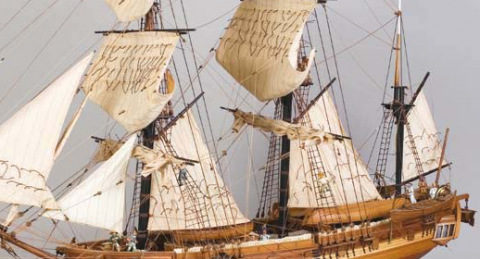
Learning outcomes
By the end of the activities pupils will be able to:
- describe details of Darwin’s voyage, why it was significant and the impact that it has had
- reflect on key relationships in Darwin’s younger life
- understand principles of collecting and conserving specimens
- analyse and compare historical sources
- compare 19 th century and contemporary expeditions
Devonport, England: Design and Technology
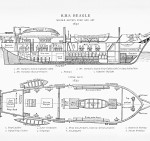
St Jago: History

Botofugo Bay: English
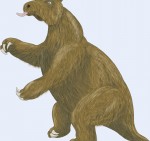
Port St Julian: Science
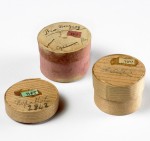
Galapagos Islands: Science/ Geography
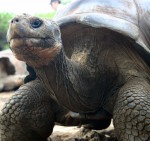
In this section:
Learning timeline, explore darwin's life and times through this timeline..
Darwin Correspondence Project [email protected]
© University of Cambridge 2022
Copyright declaration
Website by Surface Impression
- Historical sources
- Audio resources
- Video resources
- Letters data indexes

© 2024 University of Cambridge
- University A-Z
- Contact the University
- Accessibility
- Freedom of information
- Terms and conditions
- Undergraduate
- Spotlight on...
- About research at Cambridge

IMAGES
VIDEO
COMMENTS
The Voyage of the Beagle is the title most commonly given to the book written by Charles Darwin and published in 1839 as his Journal and Remarks, bringing him considerable fame and respect. This was the third volume of The Narrative of the Voyages of H.M. Ships Adventure and Beagle, the other volumes of which were written or edited by the ...
Charles Darwin - Evolution, Natural Selection, Beagle Voyage: The circumnavigation of the globe would be the making of the 22-year-old Darwin. Five years of physical hardship and mental rigour, imprisoned within a ship's walls, offset by wide-open opportunities in the Brazilian jungles and the Andes Mountains, were to give Darwin a new seriousness.
Voyage of the HMS Beagle. Darwin traveled the world for five years collecting samples then returned to England to analyze his samples. Idea for Use in the Classroom. Charles Darwin set sail on the ship HMS Beagle on December 27, 1831, from Plymouth, England. Darwin was 22 years old when he was hired to be the ship's naturalist.
Beagle, British naval vessel aboard which Charles Darwin served as naturalist on a voyage to South America and around the world (1831-36). The specimens and observations accumulated on this voyage gave Darwin the essential materials for his theory of evolution by natural selection.. HMS Beagle (the third of nine vessels to bear this name) was launched on May 11, 1820, at Woolwich, the site ...
The Beagle voyage would provide Darwin with a lifetime of experiences to ponder—and the seeds of a theory he would work on for the rest of his life. Article A Stunning Invitation In August 1831, Darwin received a letter offering a chance of a lifetime—an invitation to go on a trip around the world as a naturalist.
Charles Darwin's five-year voyage in the early 1830s on H.M.S. Beagle has become legendary, as insights gained by the bright young scientist on his trip to exotic places greatly influenced his masterwork, the book " On the Origin of Species ." Darwin didn't actually formulate his theory of evolution while sailing around the world aboard the ...
The plants and animals encountered on the five-year voyage of the 'Beagle' provided the foundation for Charles Darwin's theory of evolution. The Beagle off the coast of Tierra Del Fuego in 1834 ...
Darwin, Charles, 1809-1882: Title: The Voyage of the Beagle Note: See also PG#3704 illustrated edition Credits: John Hamm and David Widger Language: English: LoC Class: QH: Science: Natural history: Subject: Natural history Subject: Beagle Expedition (1831-1836) Subject: Geology Subject: Voyages around the world -- History -- 19th century Subject
It was a letter from his friend and former teacher, John Stevens Henslow, that brought the 22-year-old Charles Darwin news of the offer of a place on board the Admiralty surveying vessel HMS Beagle on a voyage to chart the coast of South America. During the five years of the voyage it was letters that not only kept Darwin in touch with family ...
The Voyage of the HMS BeagleOverviewCharles Darwin (1809-1882) was among the most influential scientists who ever lived. He began his career as a naturalist aboard the HMS Beagle, on its five-year surveying mission around South America and across the Pacific. Darwin's work was to make the Beagle's journey one of the best documented surveys of its time.
11. 12. From early on in the Beagle voyage, Darwin's work on the geological history of South America was his central scientific activity. But his two areas of biological activity while the ship was in, or near, South American waters (1832-1835) were palaeontology—particularly the extinct giant mammals he collected extensively—and the ...
Published: December 27, 2020 at 8:02 AM. When HMS Beagle set sail from Plymouth Sound on 27 December 1831, under the command of Robert FitzRoy, its captain and crew - including recent arts graduate Charles Darwin - expected their voyage to last 24 months. Five years later, the brig returned.
A voyage of discovery. Captain Robert FitzRoy had seen the need for a geologist during HMS Beagle's second survey of the South American coast. It was Charles Darwin who was eventually suggested to accompany Fitzroy on this voyage. The Beagle reached the Galapagos Islands on 15 September 1835, nearly four years after setting off from Plymouth ...
a Scroll Storytelling. Beagle sailed from Plymouth Sound on 27 December 1831 under the command of Captain Robert FitzRoy. While the expedition was originally planned to last two years, it lasted almost five—Beagle did not return until 2 October 1836. Darwin spent most of this time exploring on land (three years and three months on land; 18 ...
The offer of a position on the Beagle, which Charles received on August 30, 1831, came through his advisor, Henslow, at Cambridge. Henslow himself had been invited to be the naturalist for the ship, but had turned down the opportunity. The voyage had been commissioned by the government to map the coast of South America and was being captained by Robert FitzRoy, a 26-year-old gentleman who had ...
Charles Darwin and the voyage of the Beagle. Charles Darwin travelled the world on the HMS Beagle for five years from 1831 to 1836. This journey had a crucial impact on the development of his theories of evolution. This interactive timeline outlines the major events in this significant voyage. To navigate through the timeline, you can either ...
Alison Pearn explains how Darwin joined the voyage and how close he came to not going at all. ' HMS Beagle, incorporating Middle Section, Fore and Aft 1832' by Midshipman Philip Gidley King. In 1831, Darwin joined a voyage that he later referred to 'as by far the most important event in my life'. Dive in to our 3D model of the Beagle ...
The Route of the HMS Beagle. The HMS Beagle, captained by Robert FitzRoy, set sail from Plymouth Sound in England on December 27, 1831. Initially planned as a two year survey expedition, the voyage lasted nearly five years and circumnavigated the world. Darwin recorded his observations in journals and later published them in 1839.
The Voyage of the Beagle. Paperback - Abridged, January 1, 1989. When HMS Beagle sailed out of Devonport on 27 December 1831, Charles Darwin was twenty-two and setting off on the voyage of a lifetime. His journal, here reprinted in a shortened form, shows a naturalist making patient observations concerning geology, natural history, people ...
Research leading to Darwin's theory of evolution. Route. The second voyage of HMS Beagle, from 27 December 1831 to 2 October 1836, was the second survey expedition of HMS Beagle, made under her newest commander, Robert FitzRoy. (During Beagle's first voyage, Captain Pringle Stokes had died by suicide.
About The Voyage of the Beagle. In 1831, Charles Darwin embarked on an expedition that, in his own words, determined my whole career. The Voyage of the Beagle chronicles his five-year journey around the world and especially the coastal waters of South America as a naturalist on the H.M.S. Beagle. While traveling through these unexplored countries collecting specimens, Darwin began to formulate ...
Much of Darwin's findings were based on his travels and discoveries during his five-year voyage on naval vessel HMS Beagle, from 1831 to 1836. He was in his 20s then, and while surveying places ...
📜 Charles Darwin: The Voyage of the Beagle -The 1830s were an exciting time for science. All throughout Europe, there was a great movement to explore, map, ...
The Darwin Doodle competition was organised by Darwin200, a non-profit dedicated to commemorating the 200th anniversary of the famous naturalist's ground-breaking voyage on HMS Beagle.
Read about Darwin's adventures and plan your own expedition. In 1831, aged 22, Charles Darwin set sail on HMS Beagle for a voyage that would change his life and the way that we understand the world. Find out about the adventures that he had during his five years abroad.